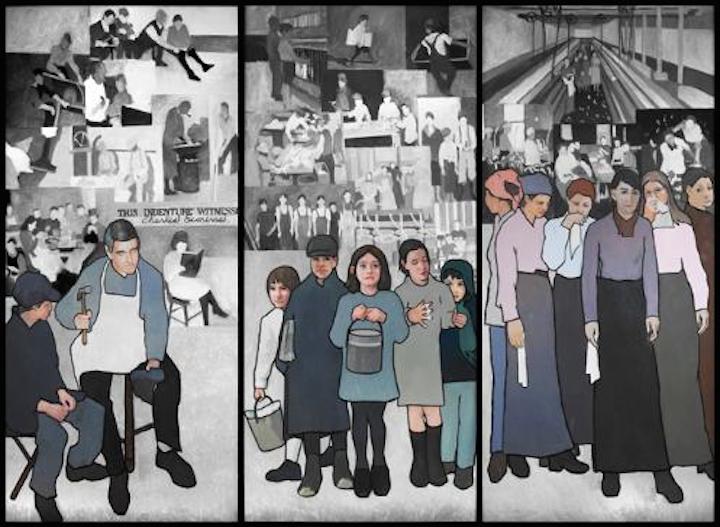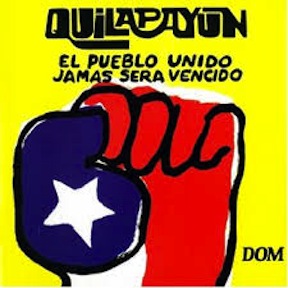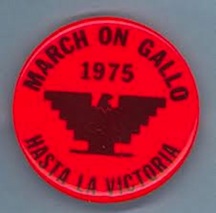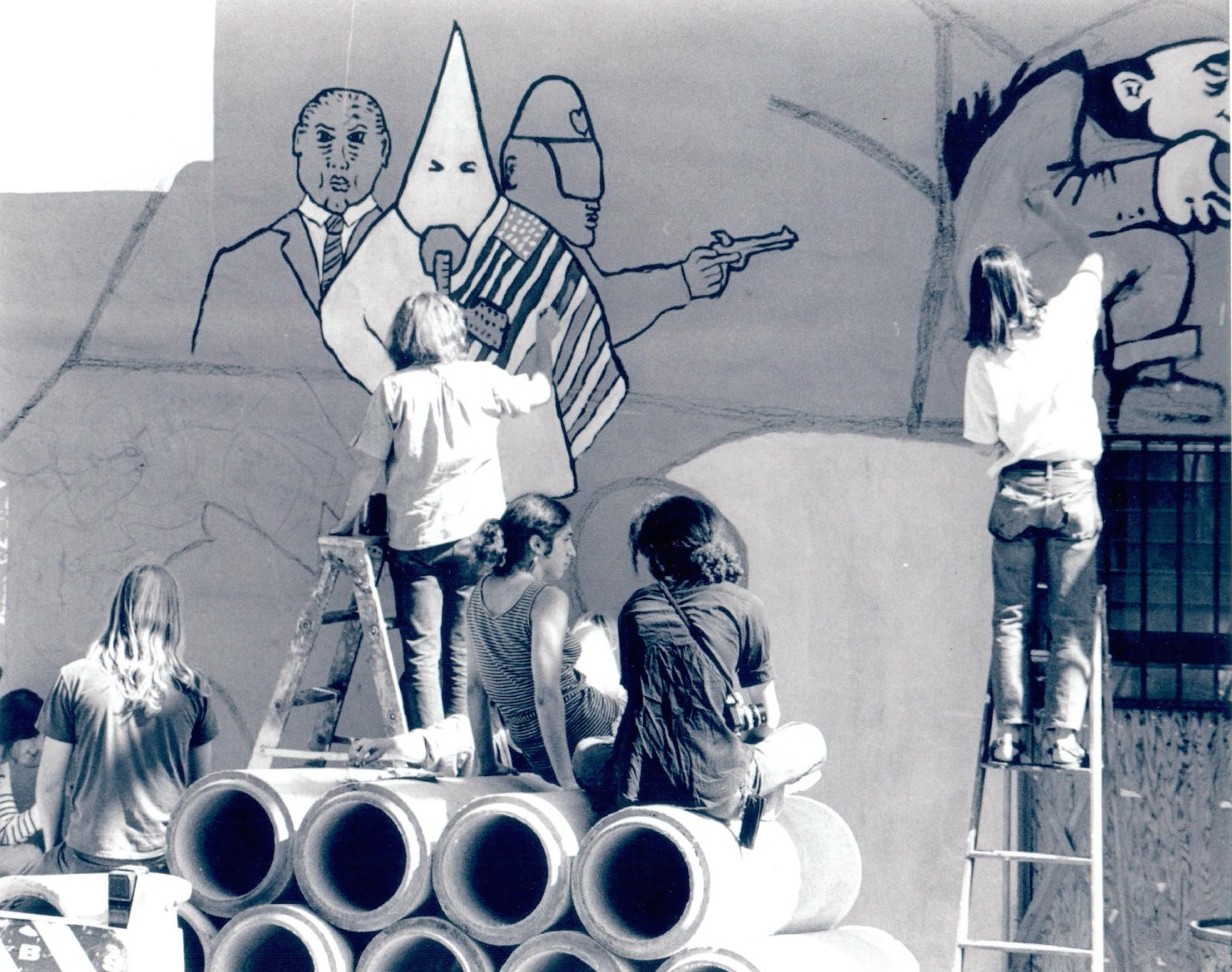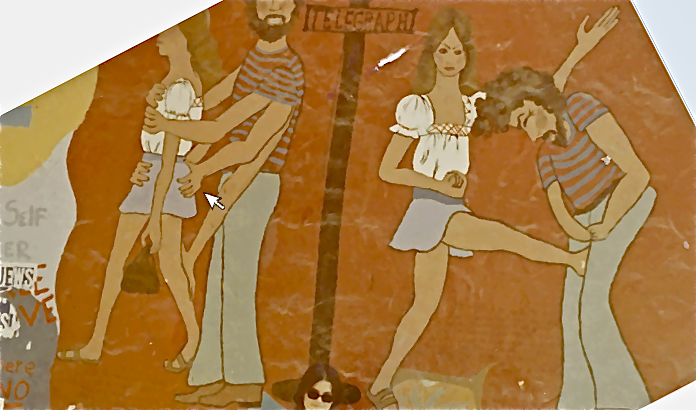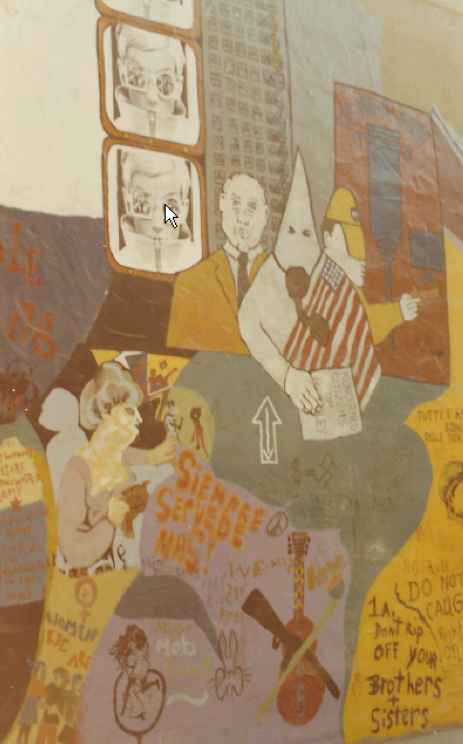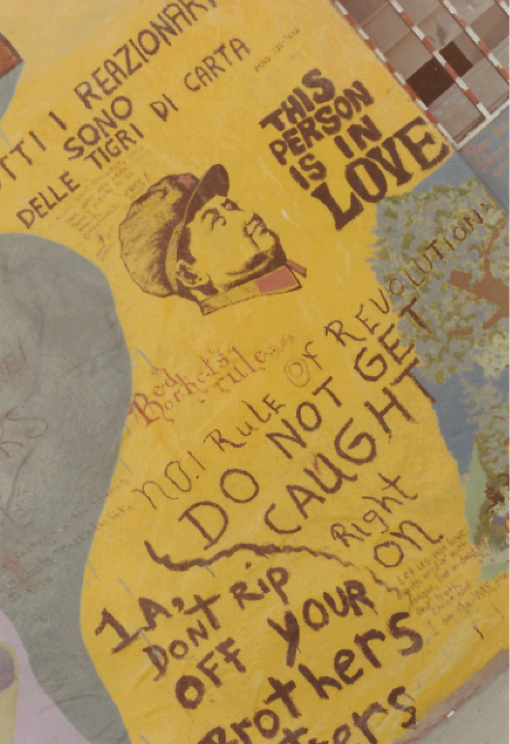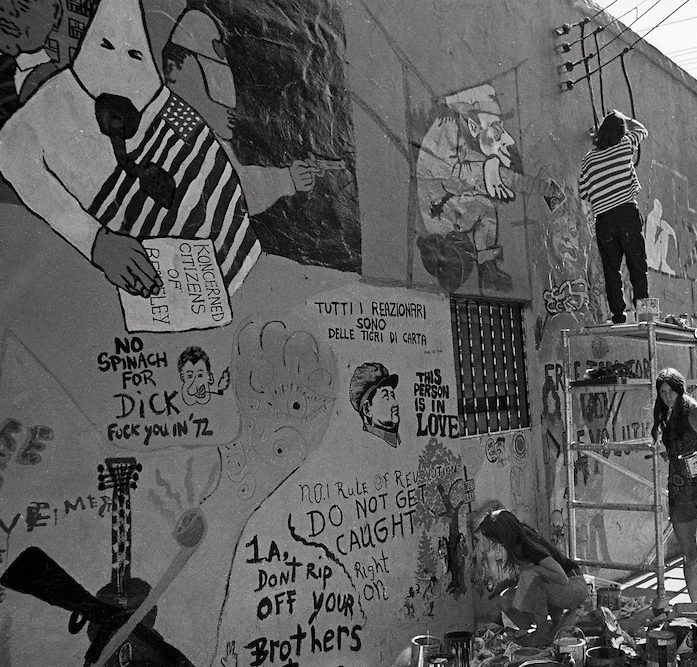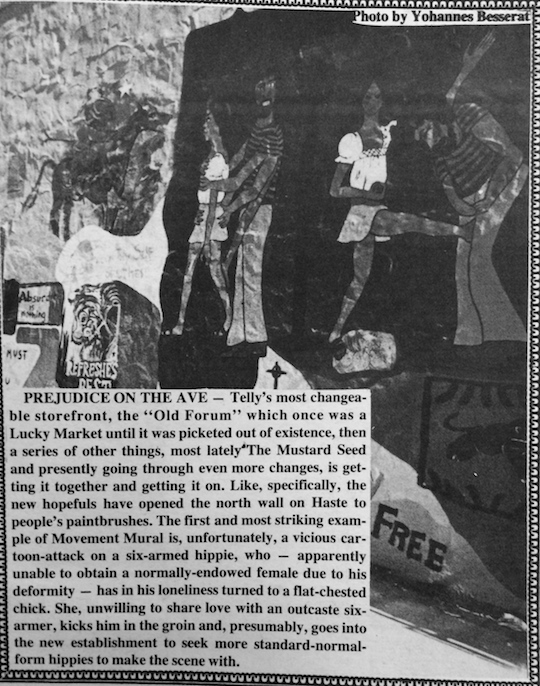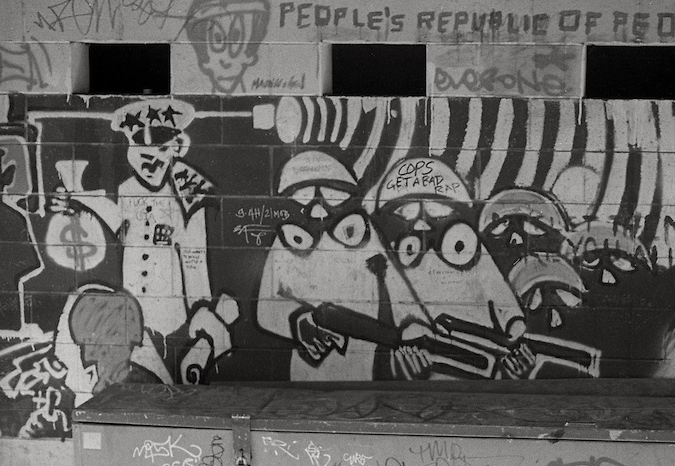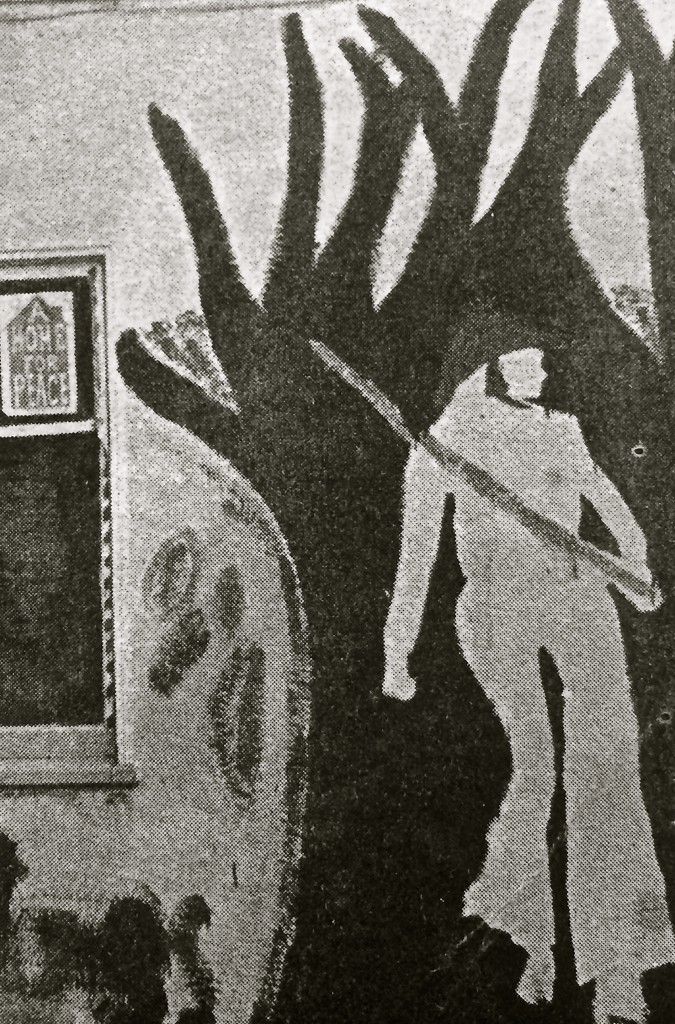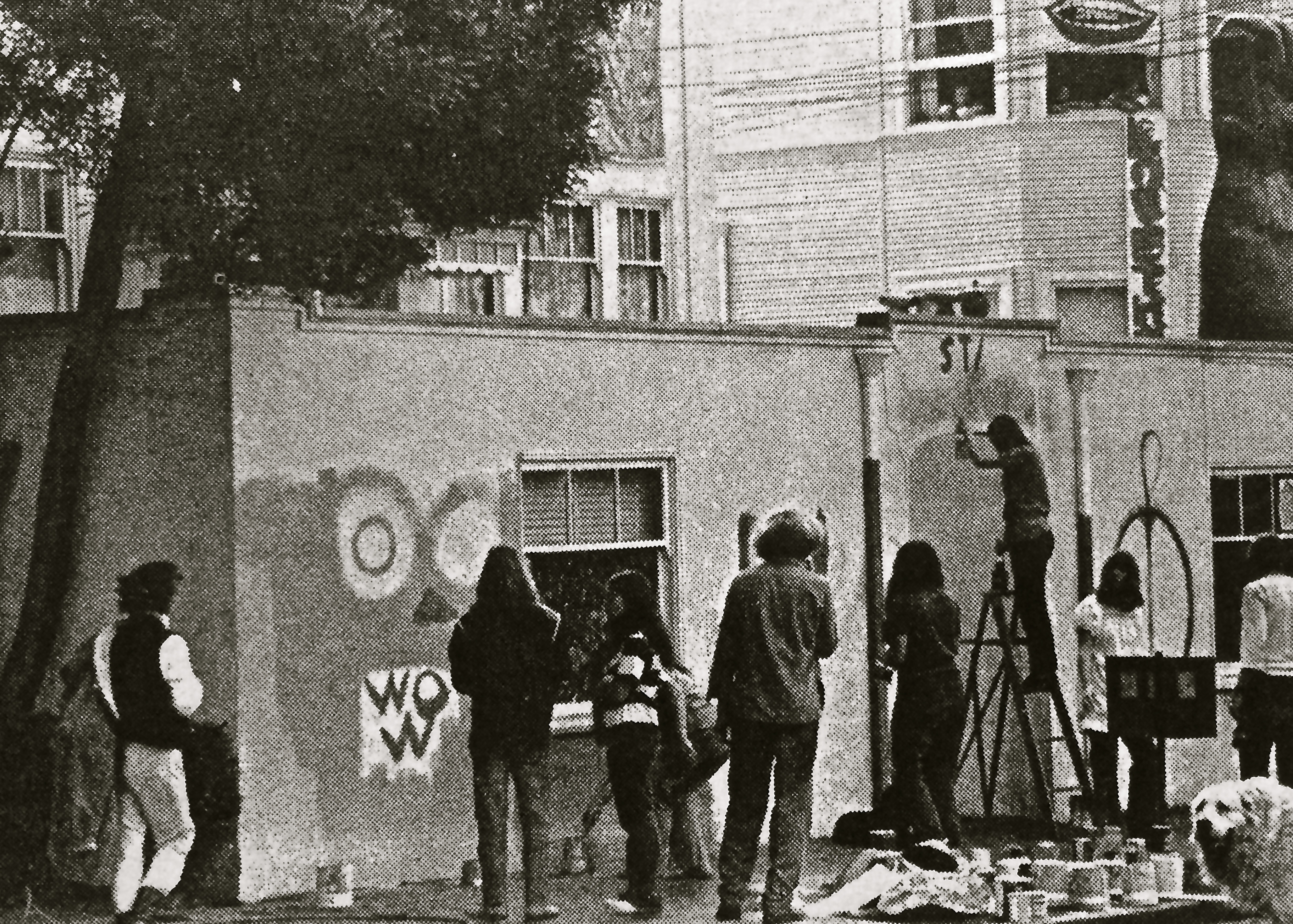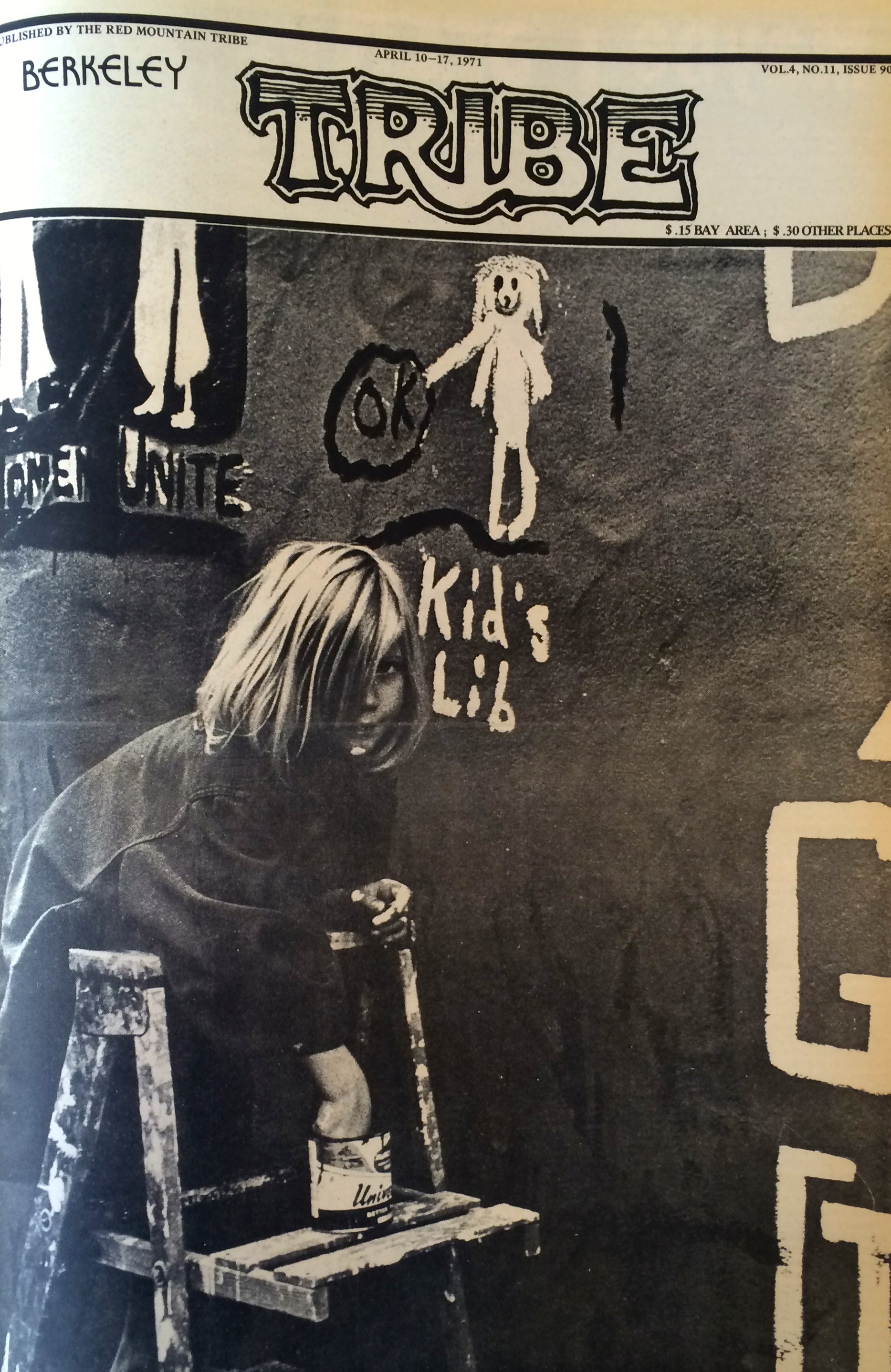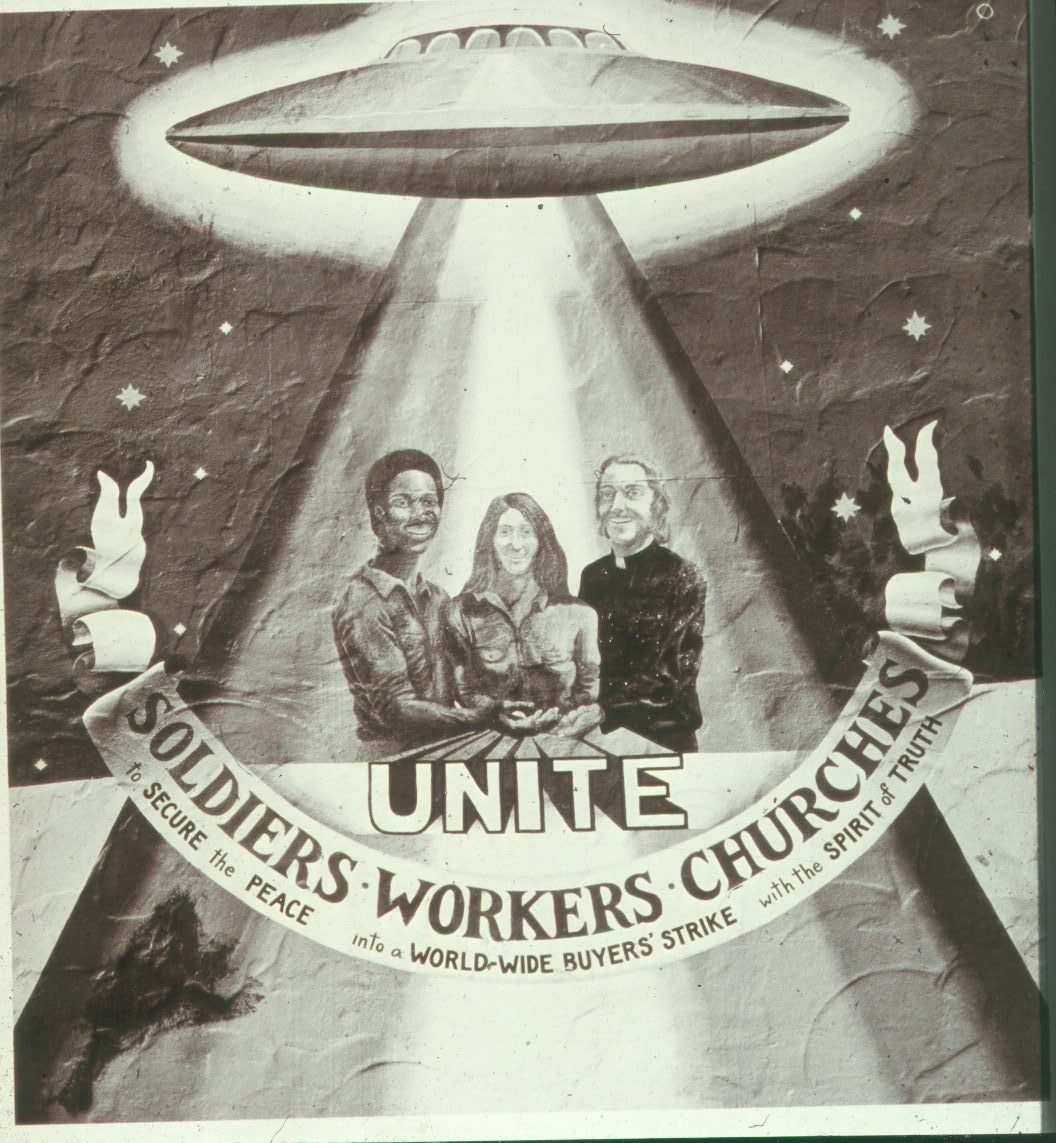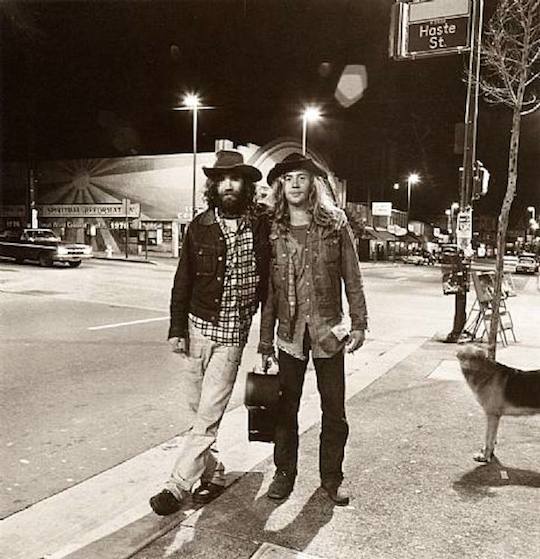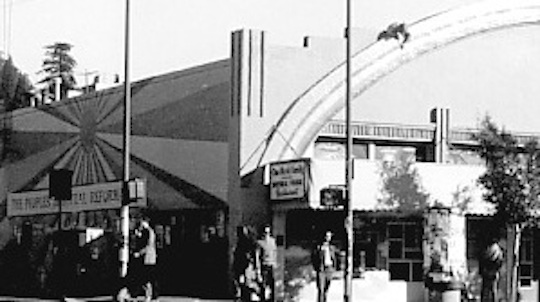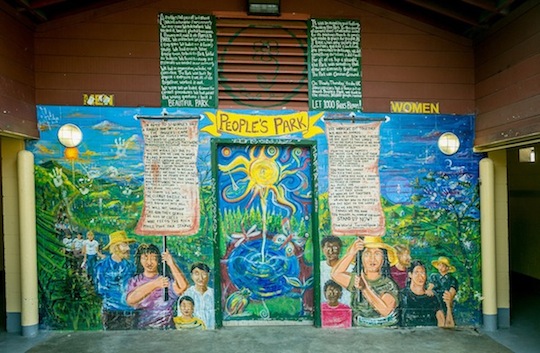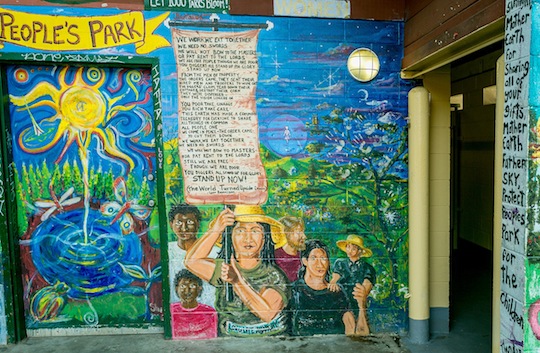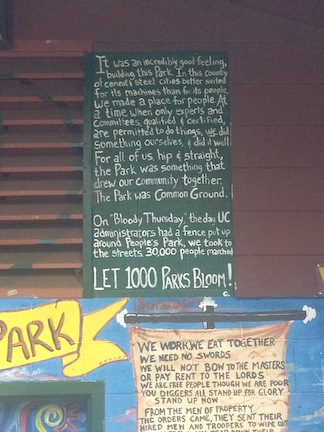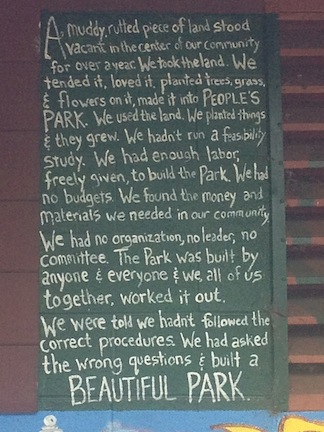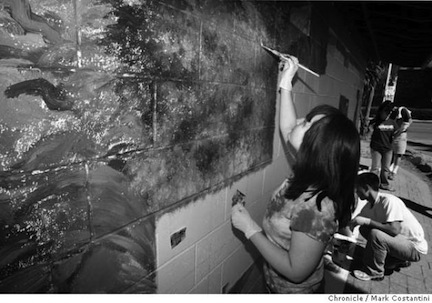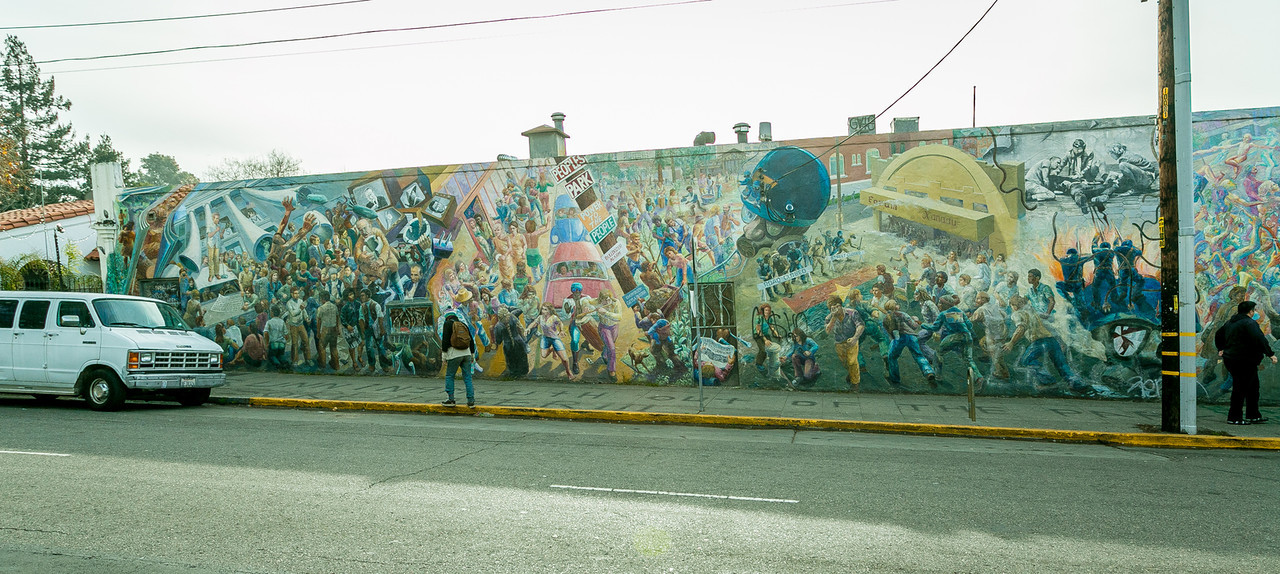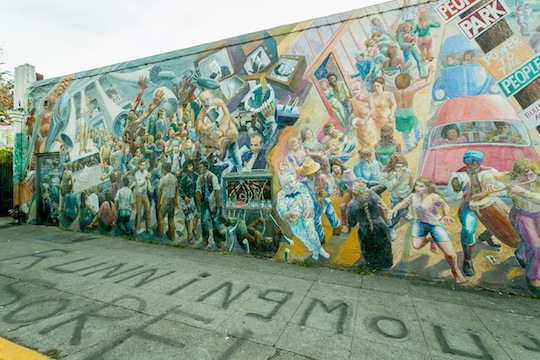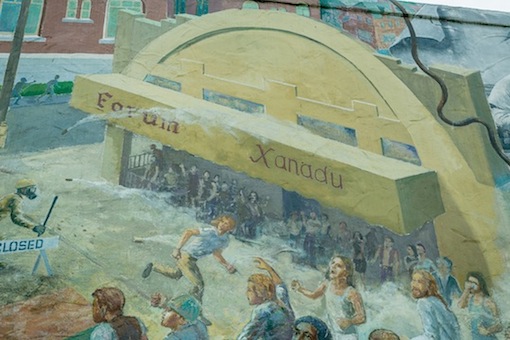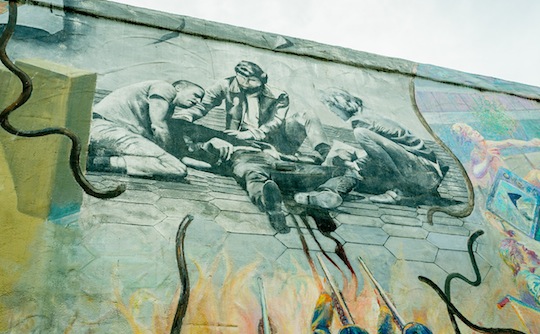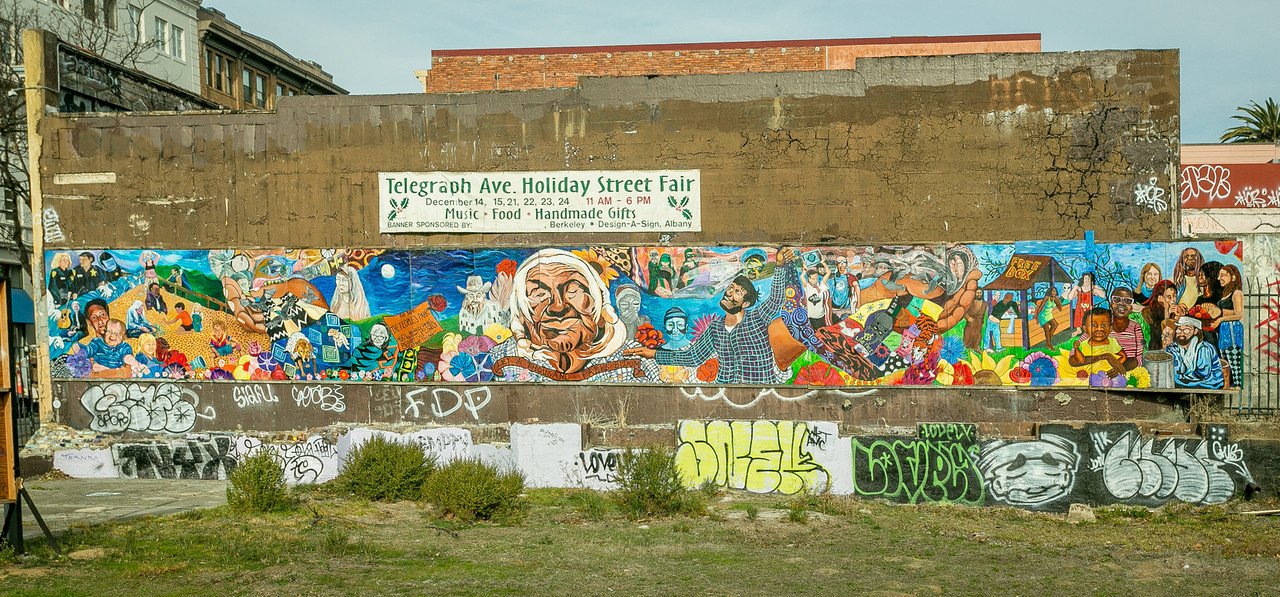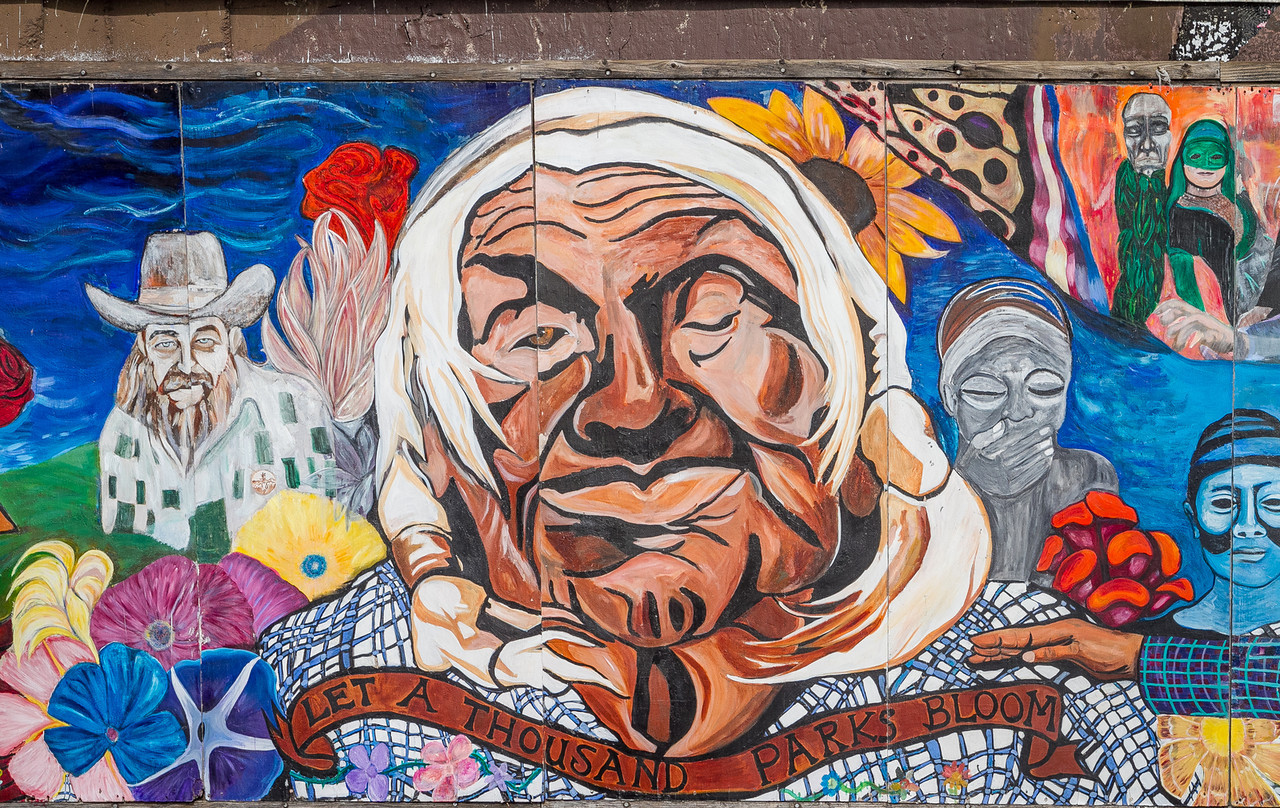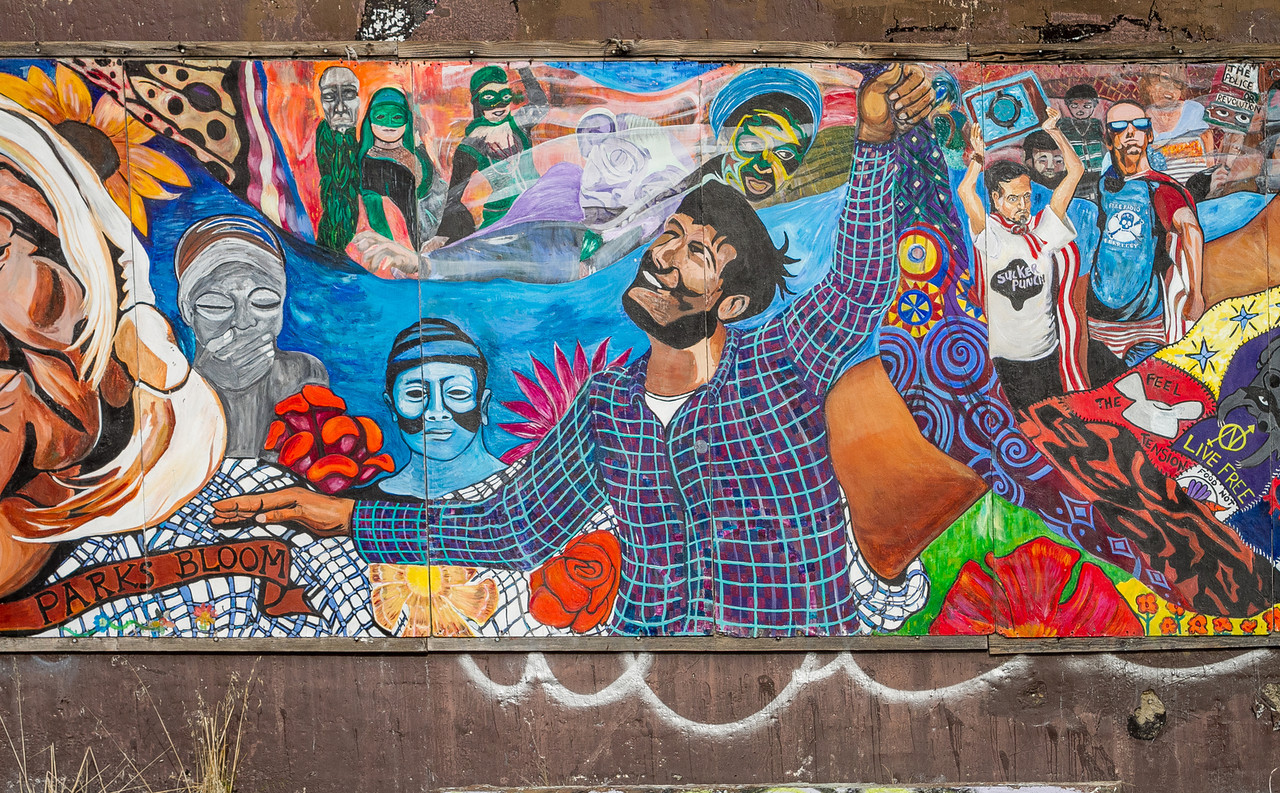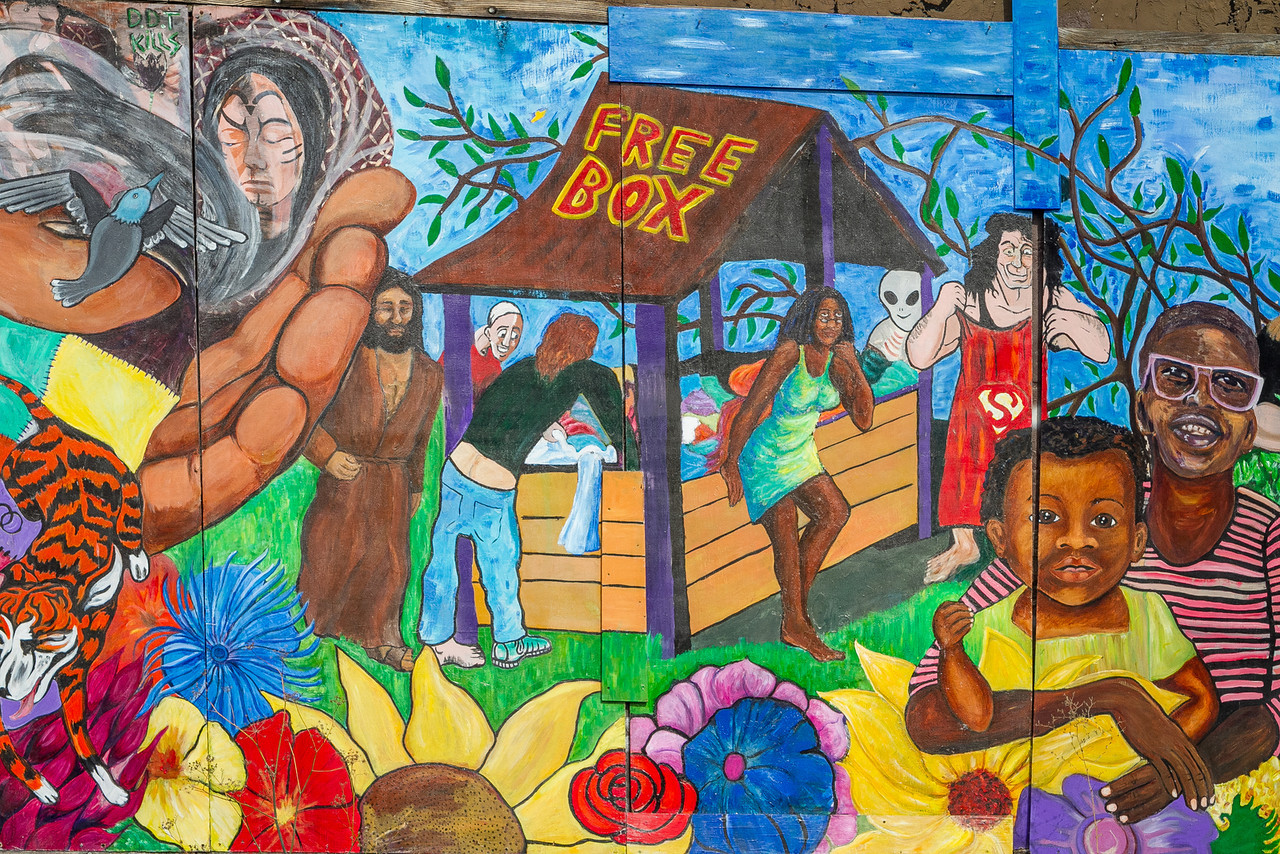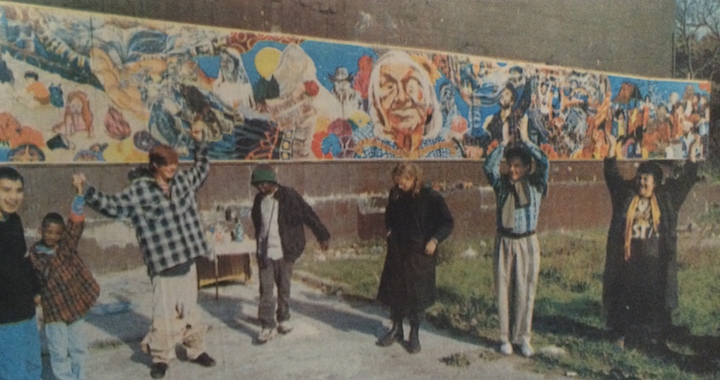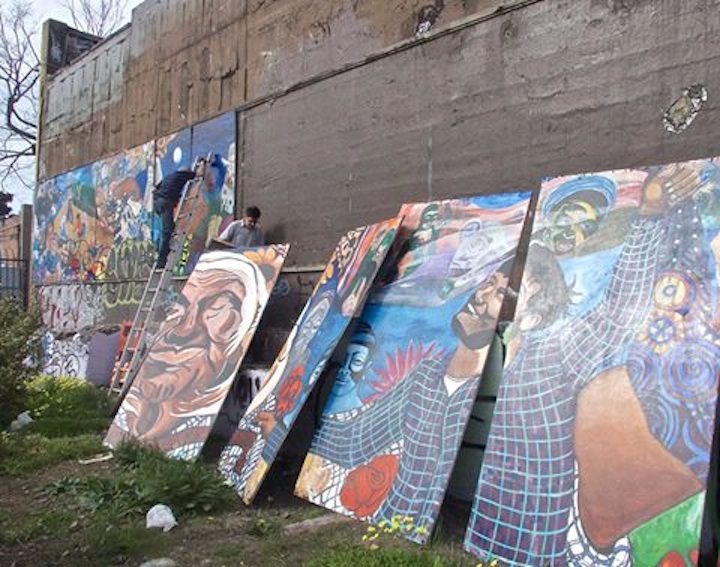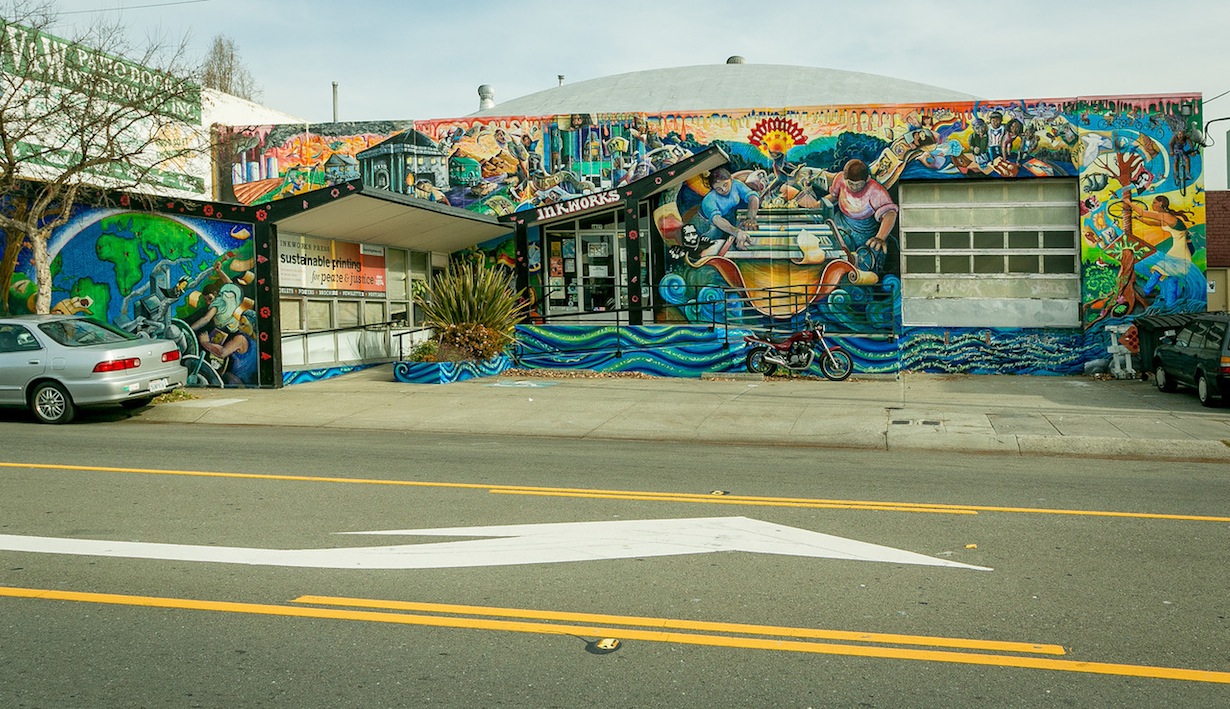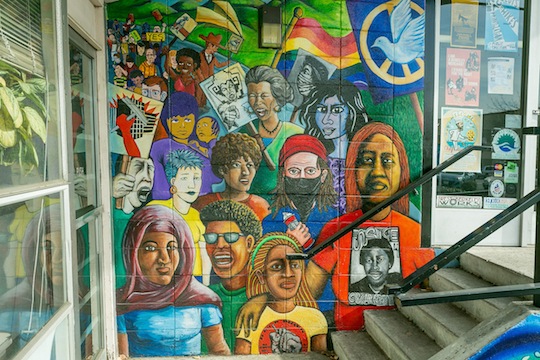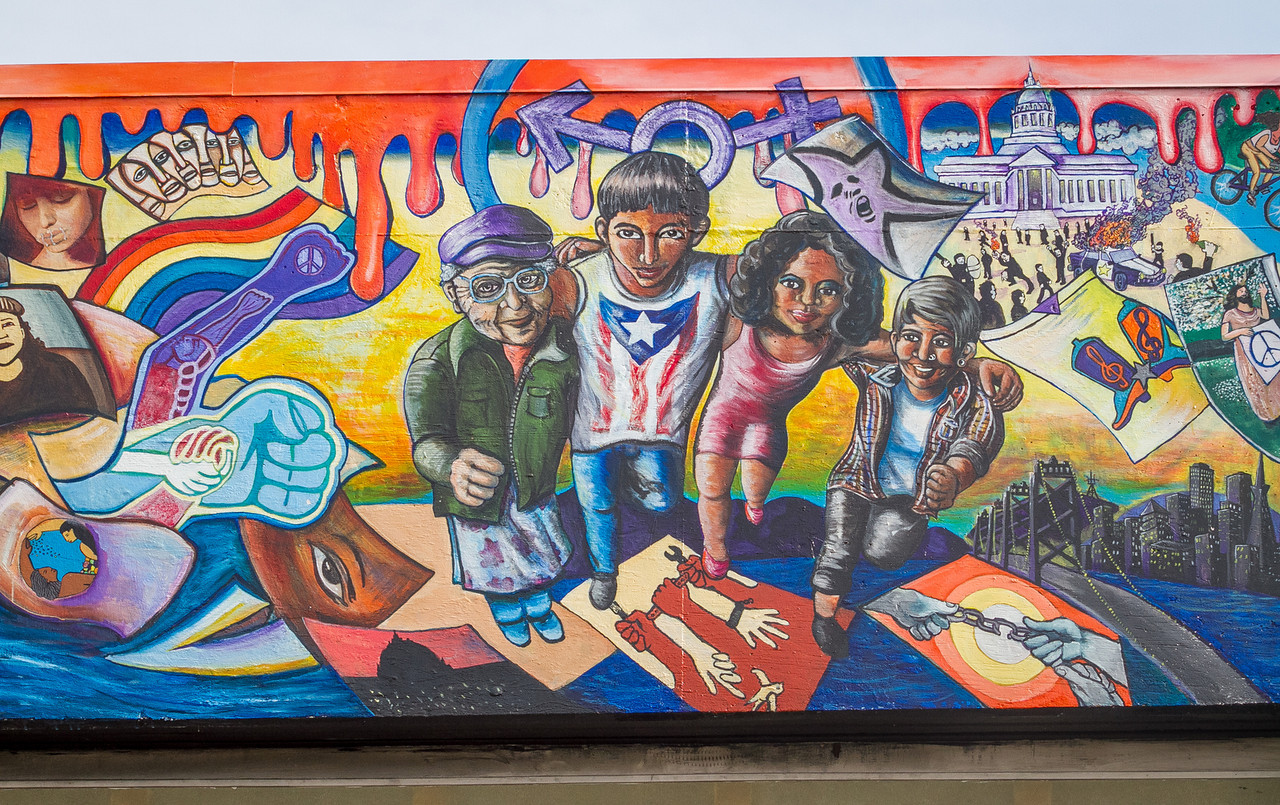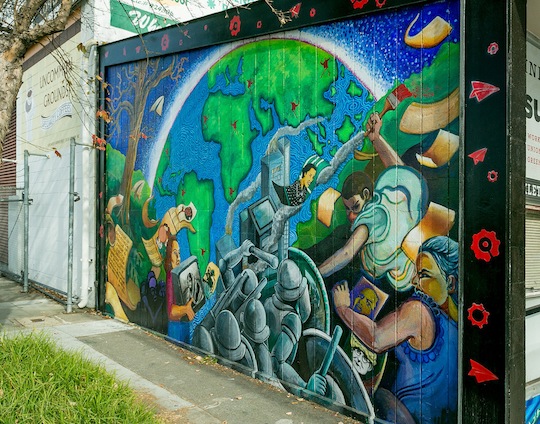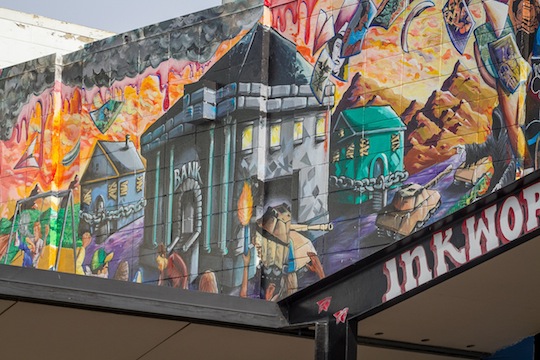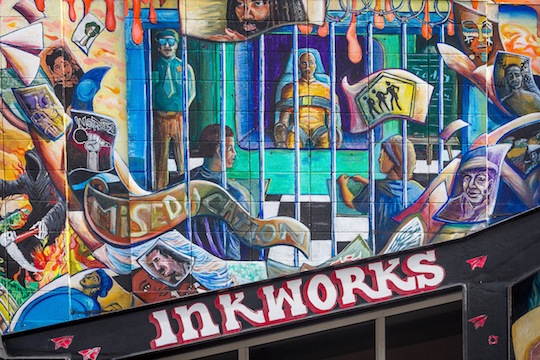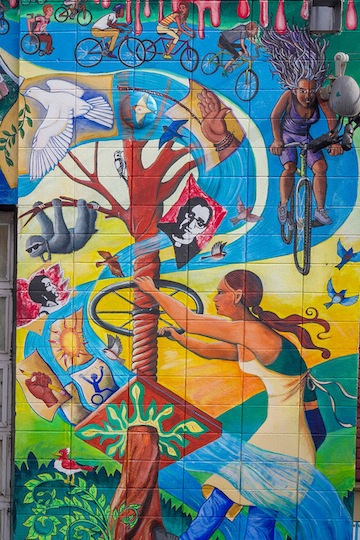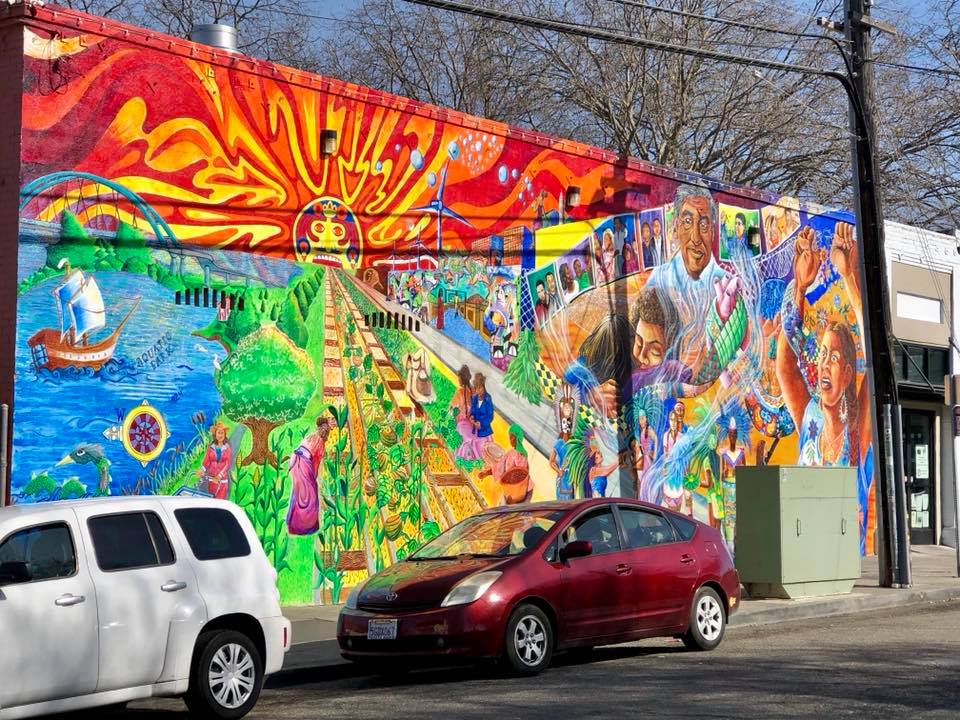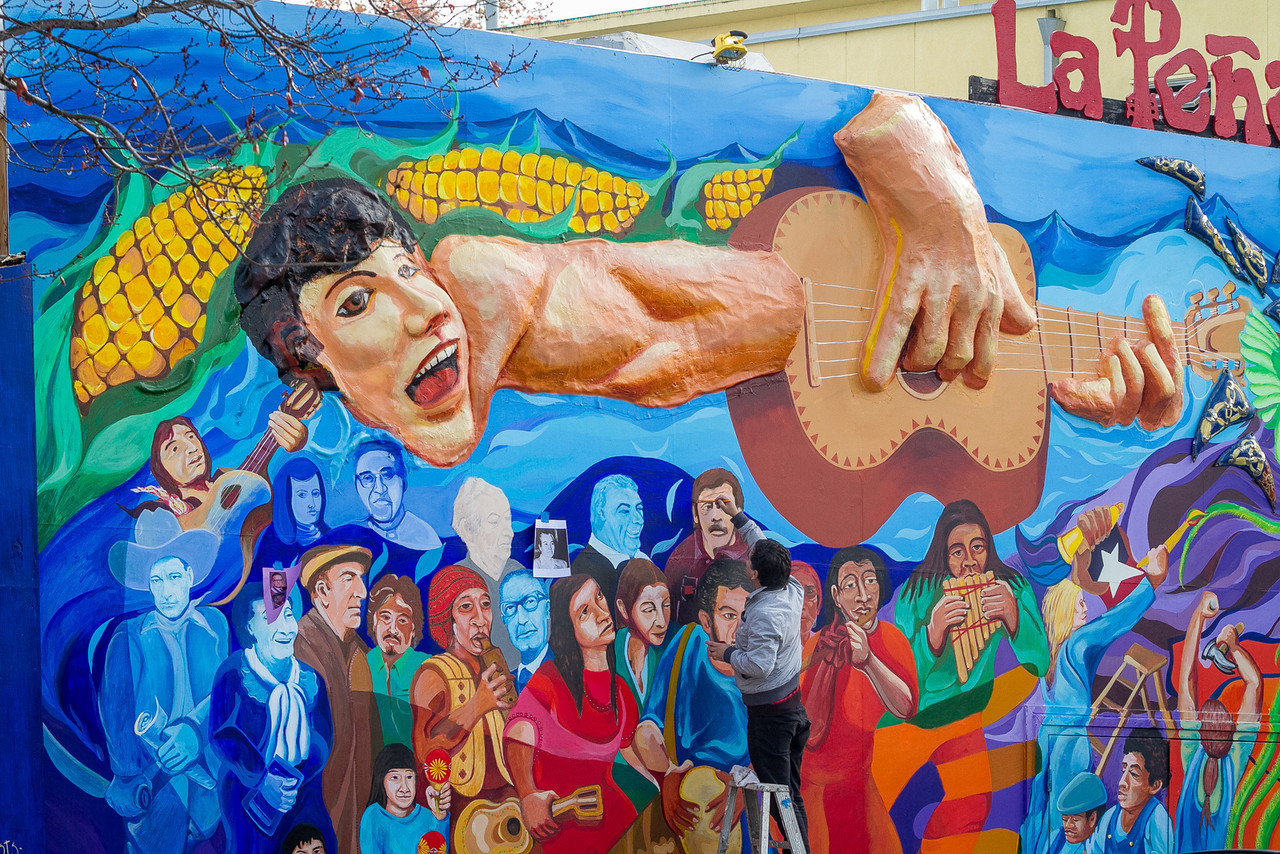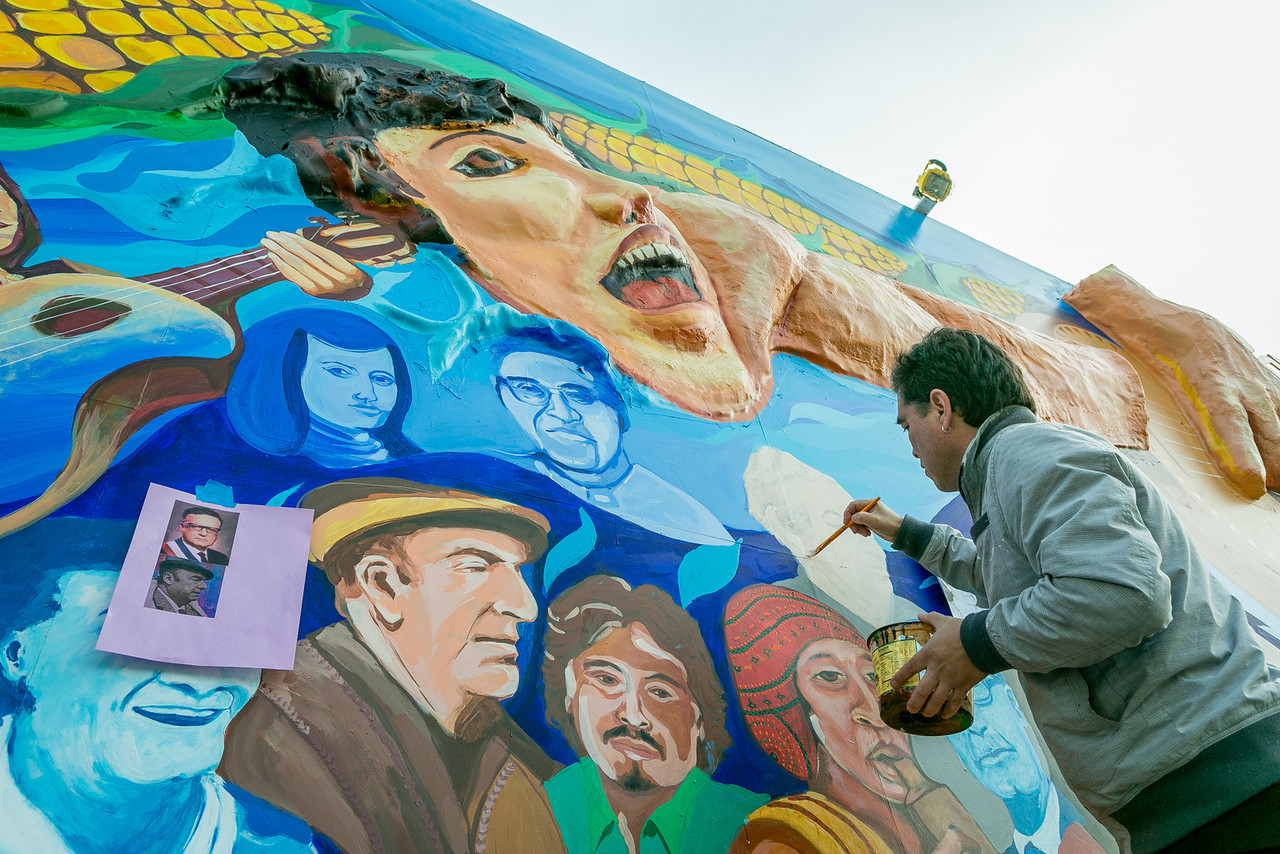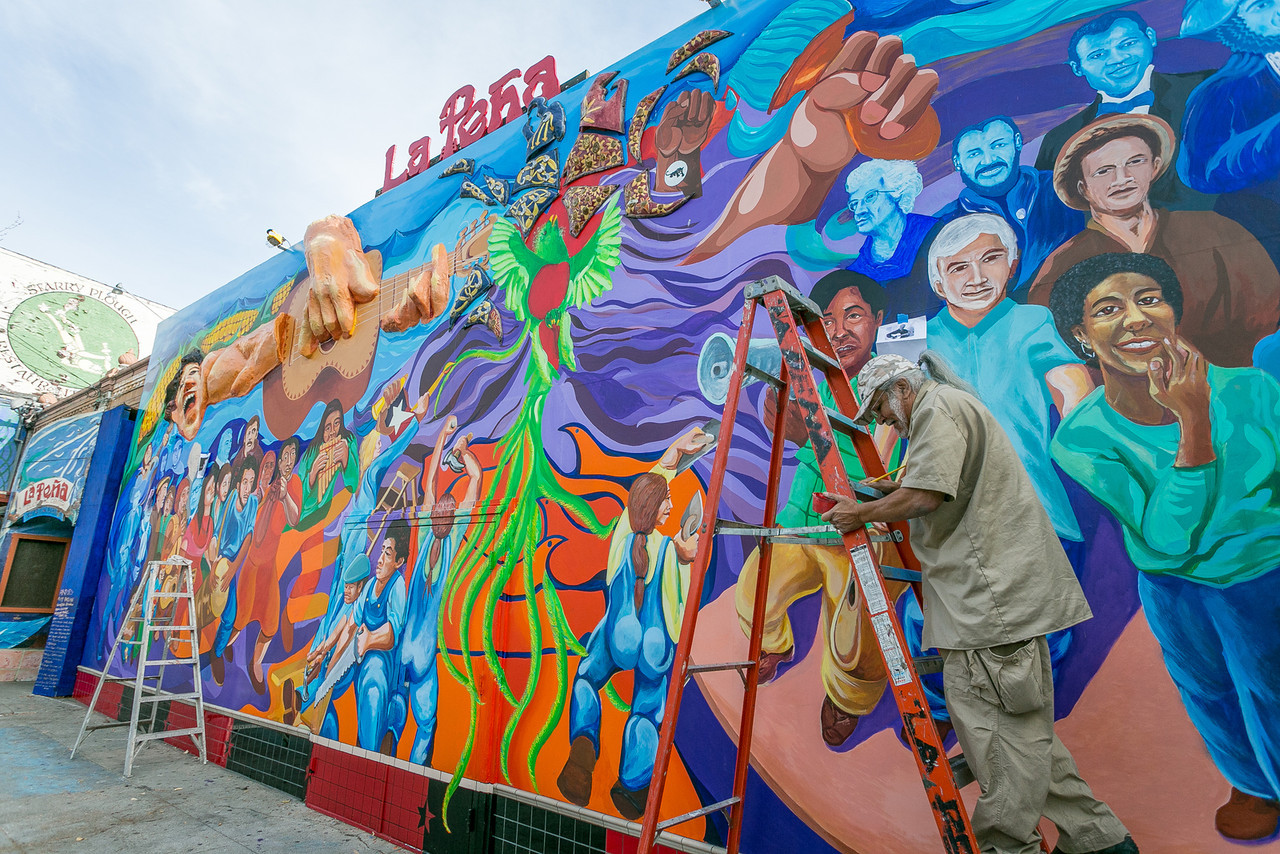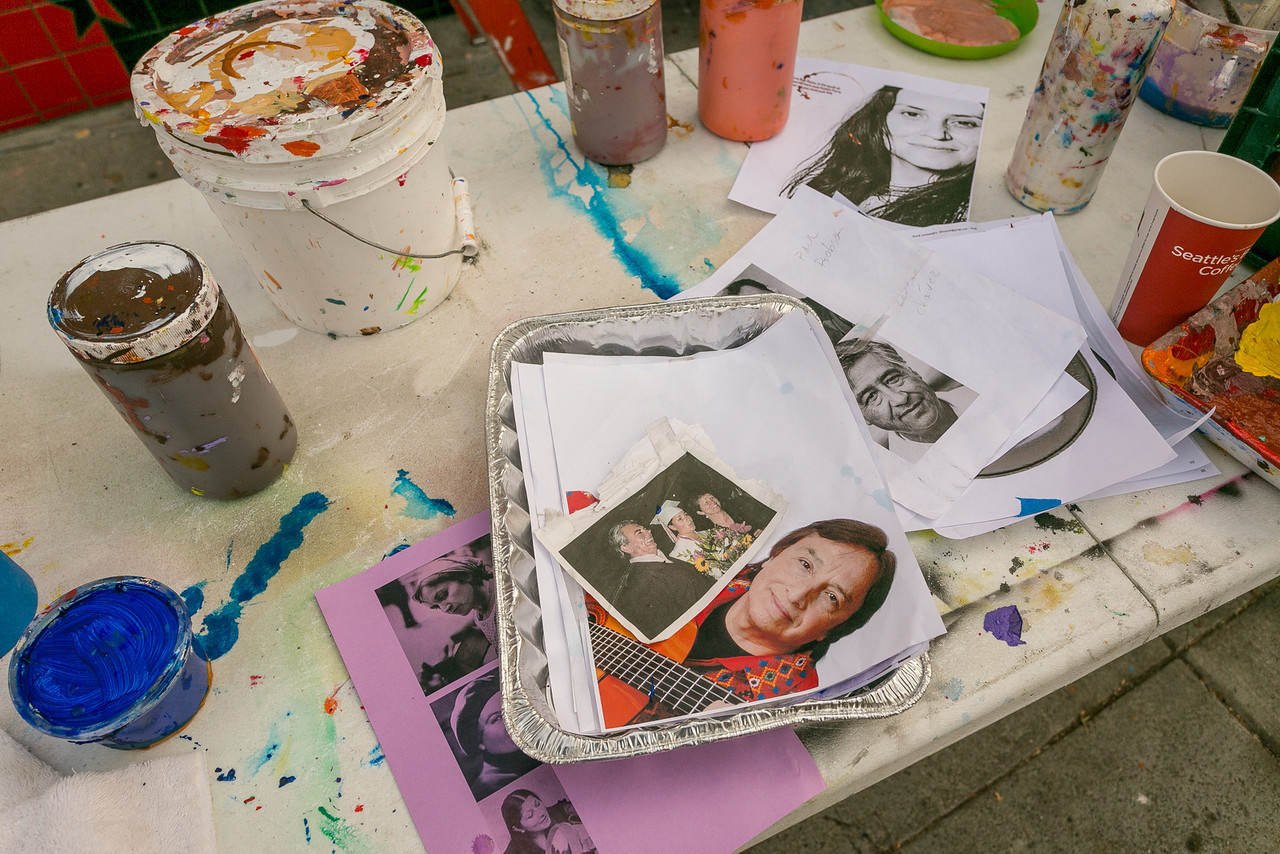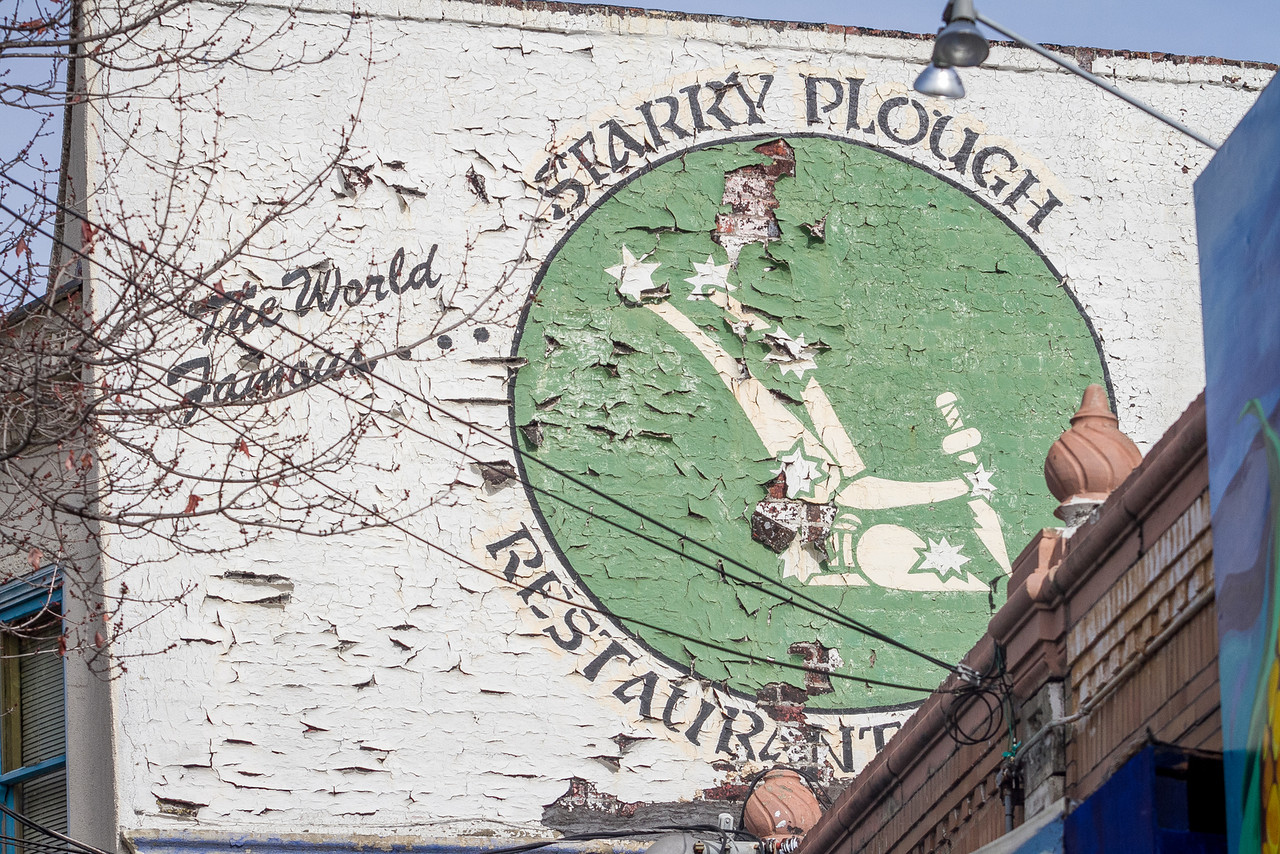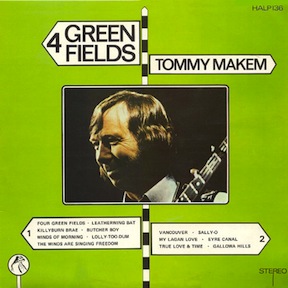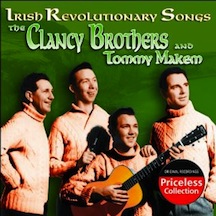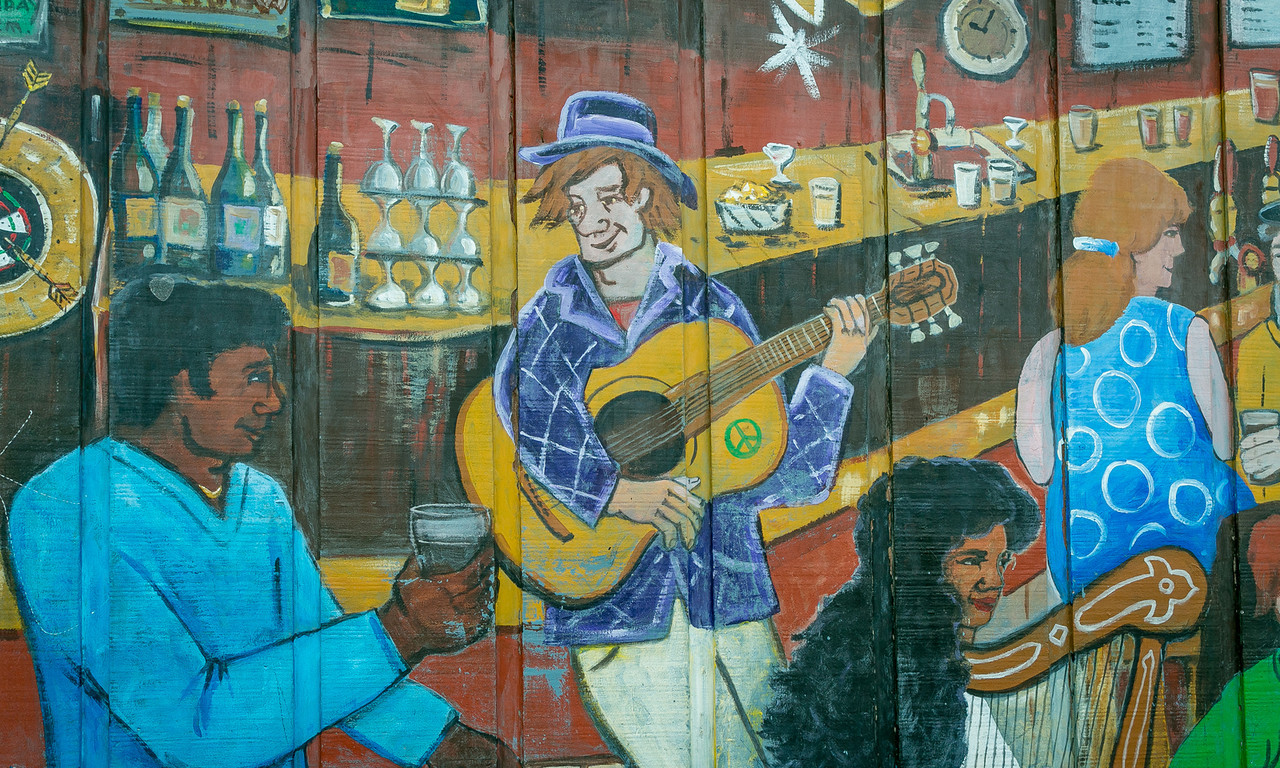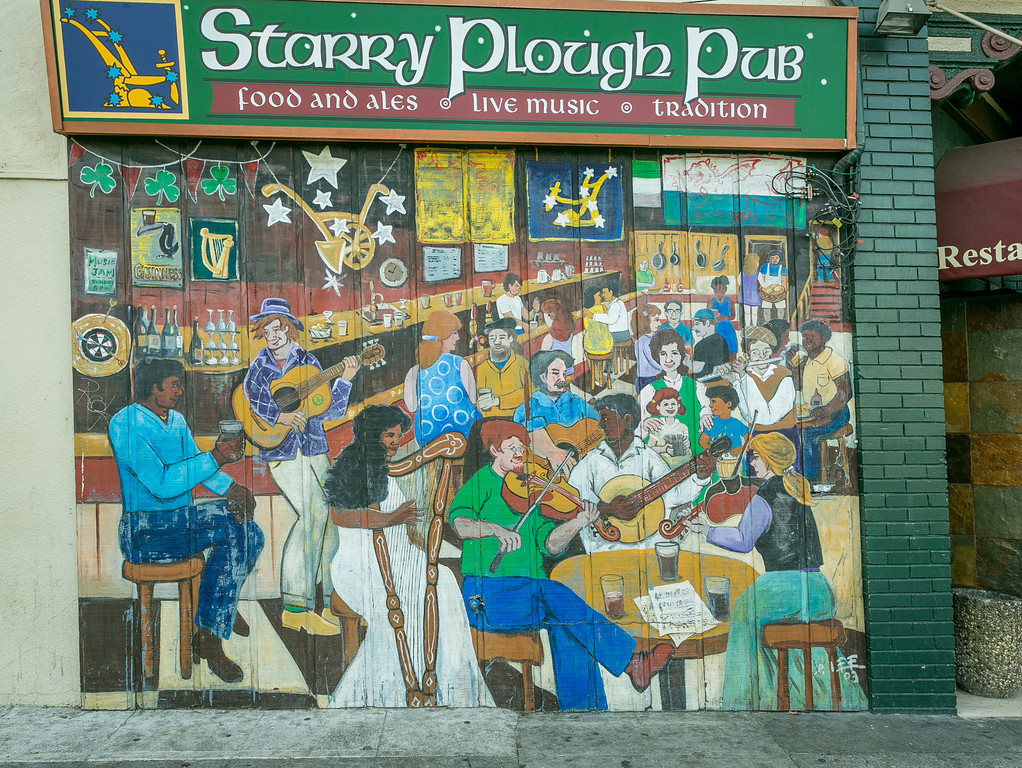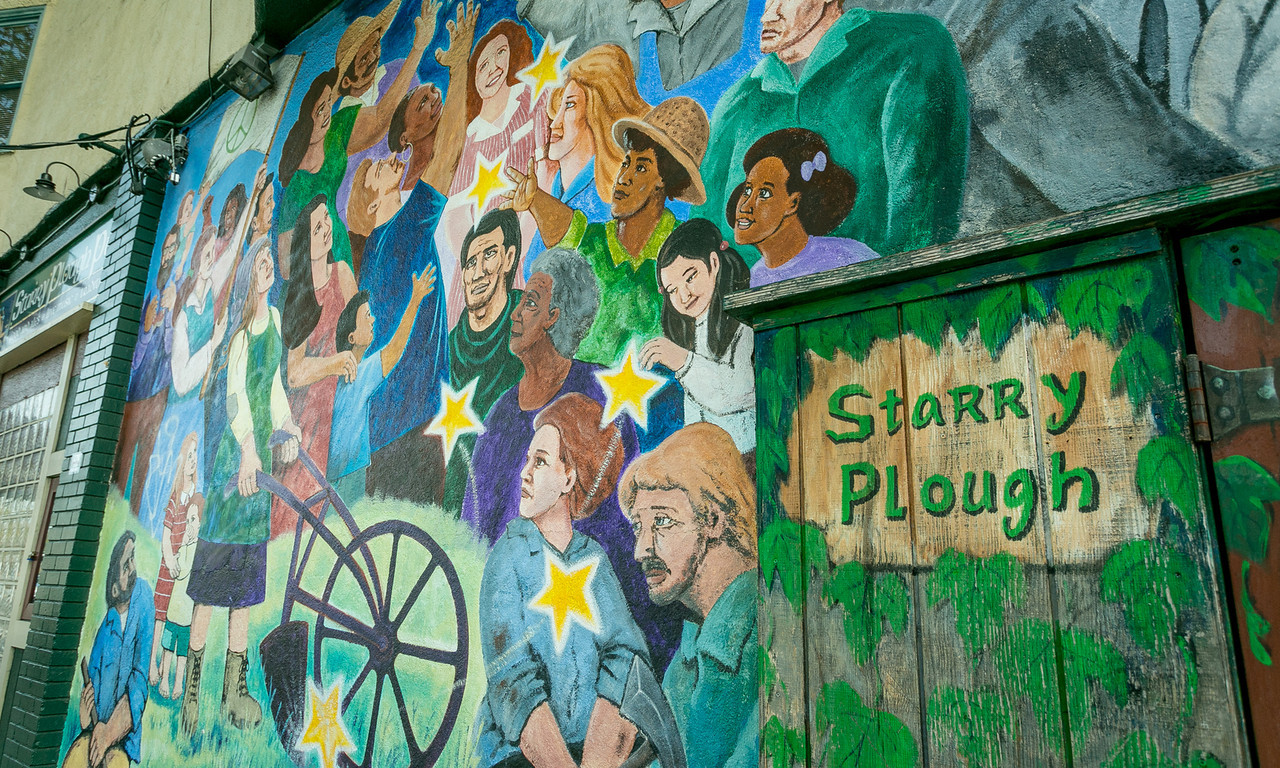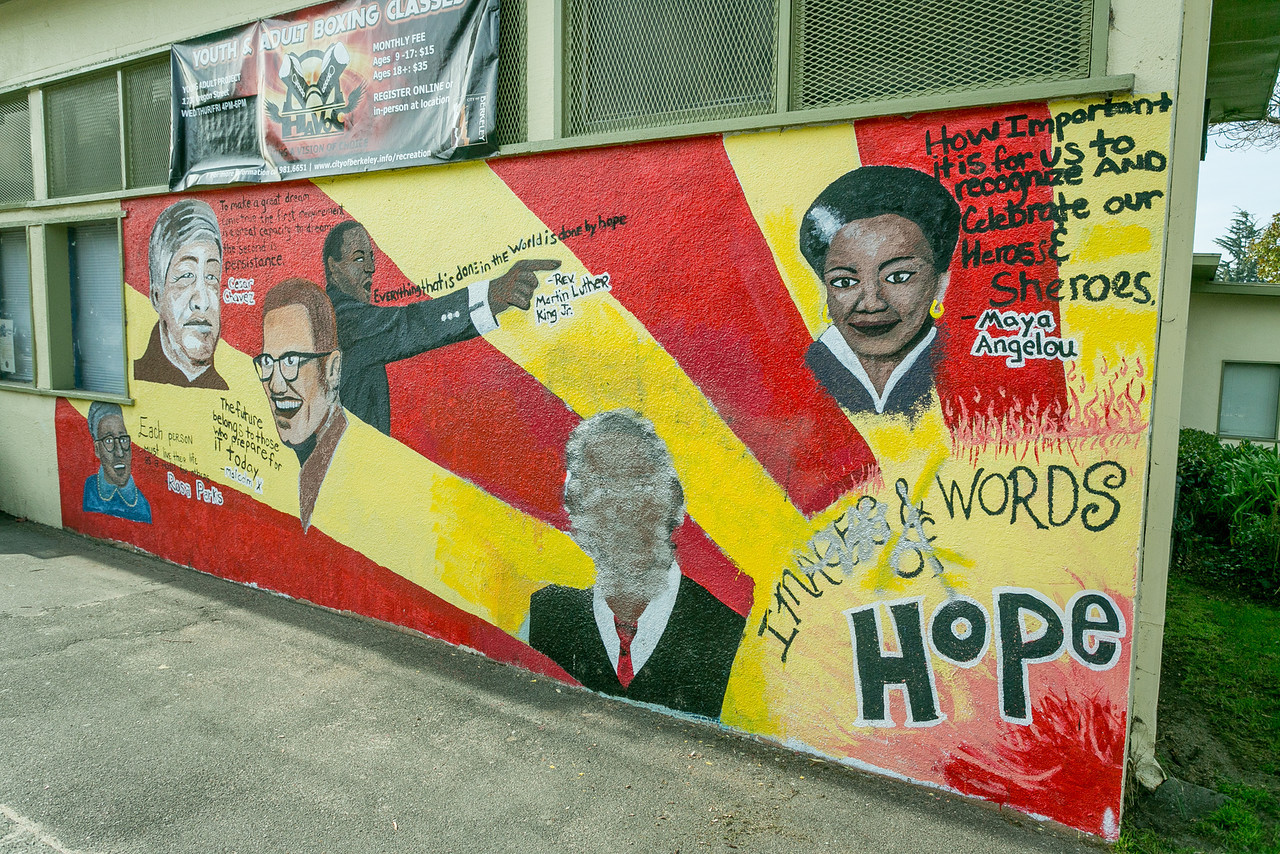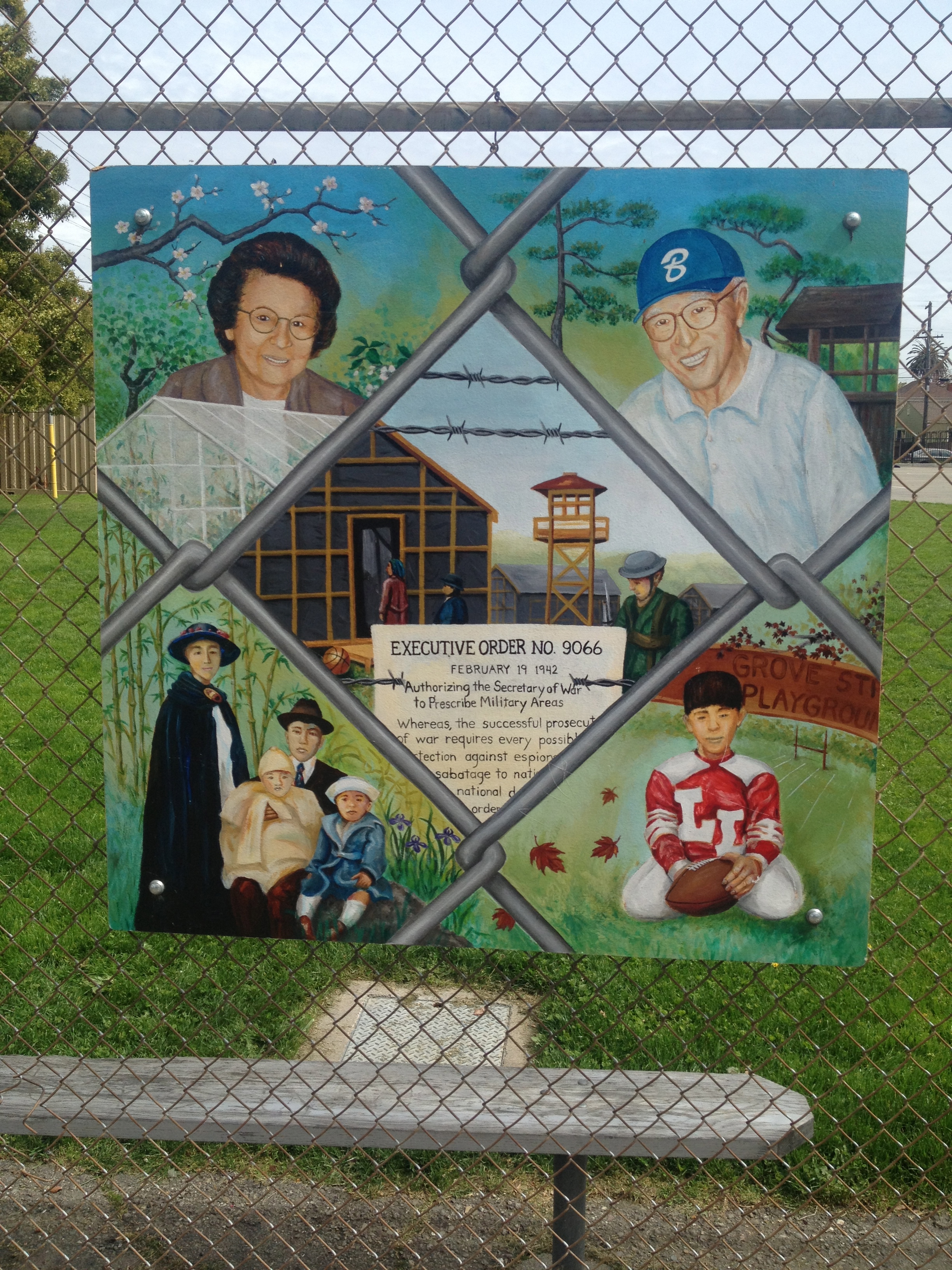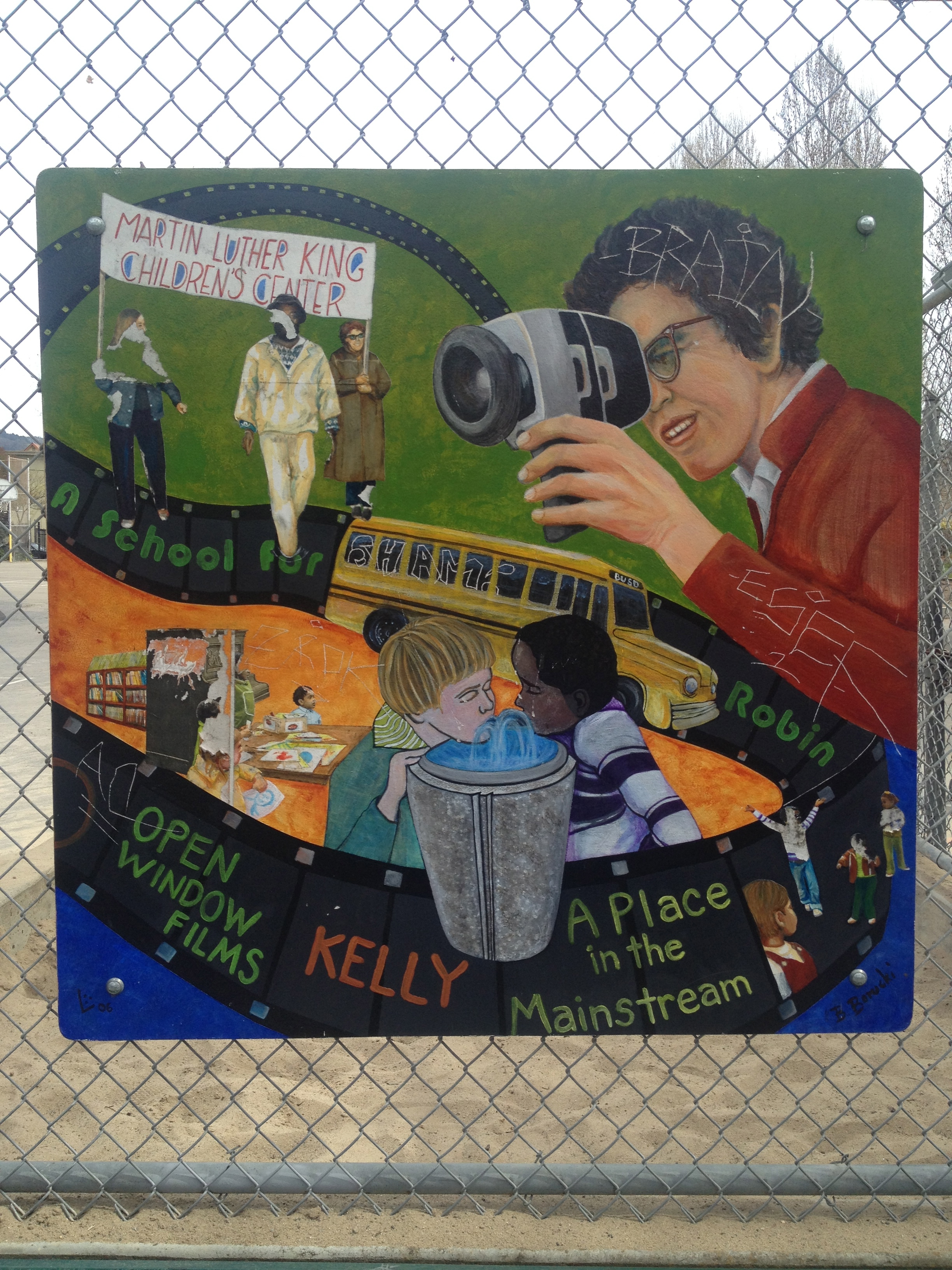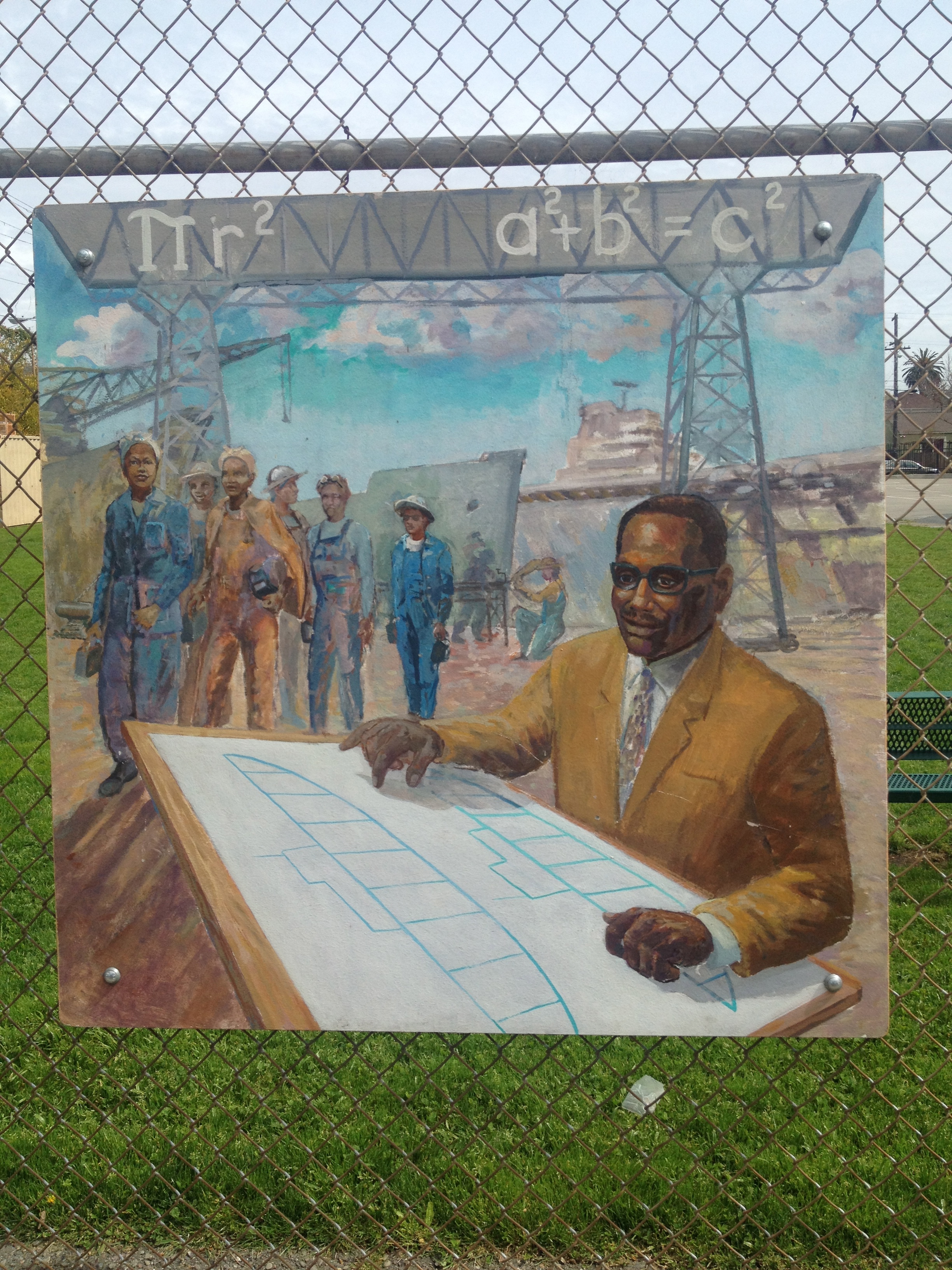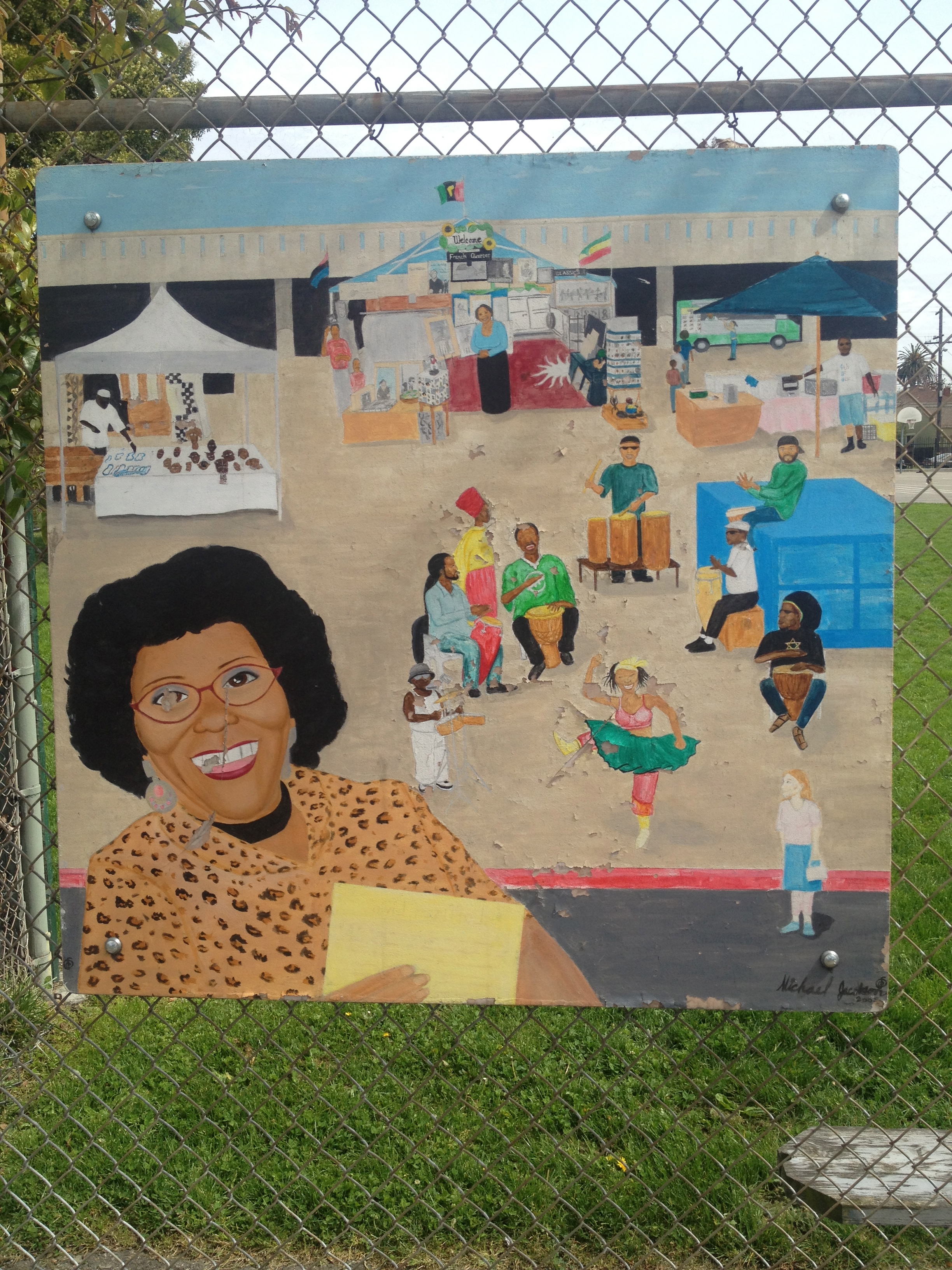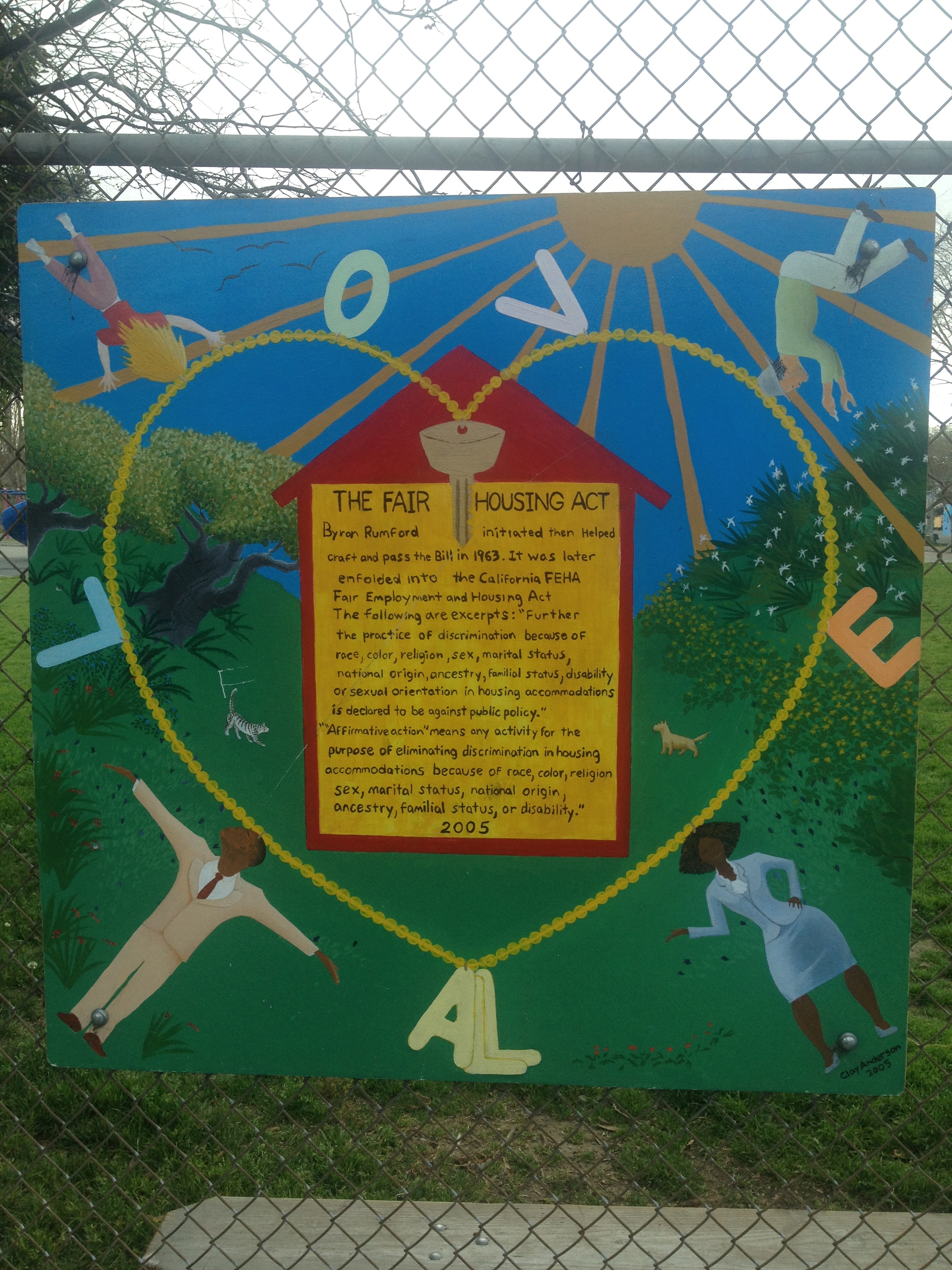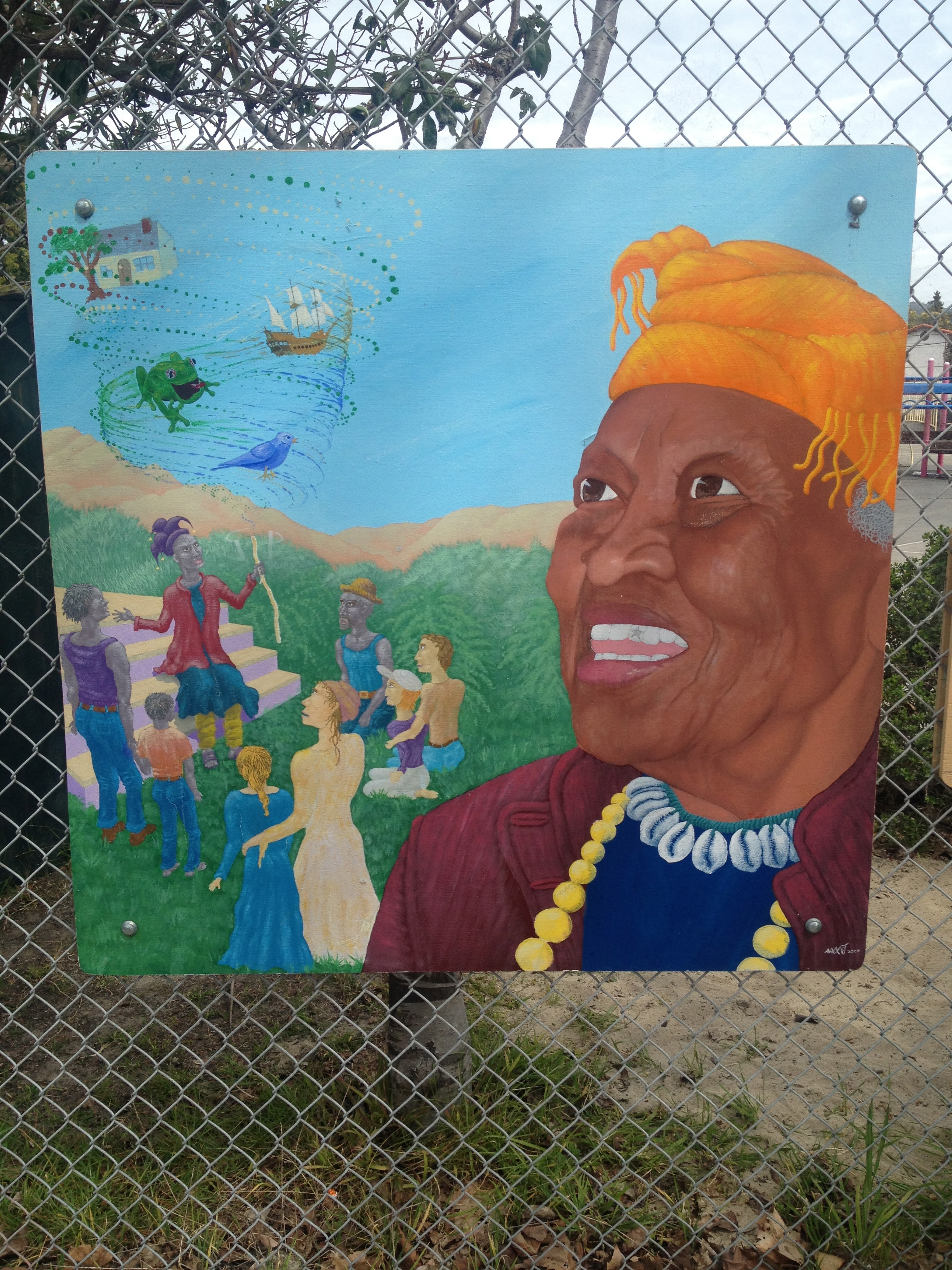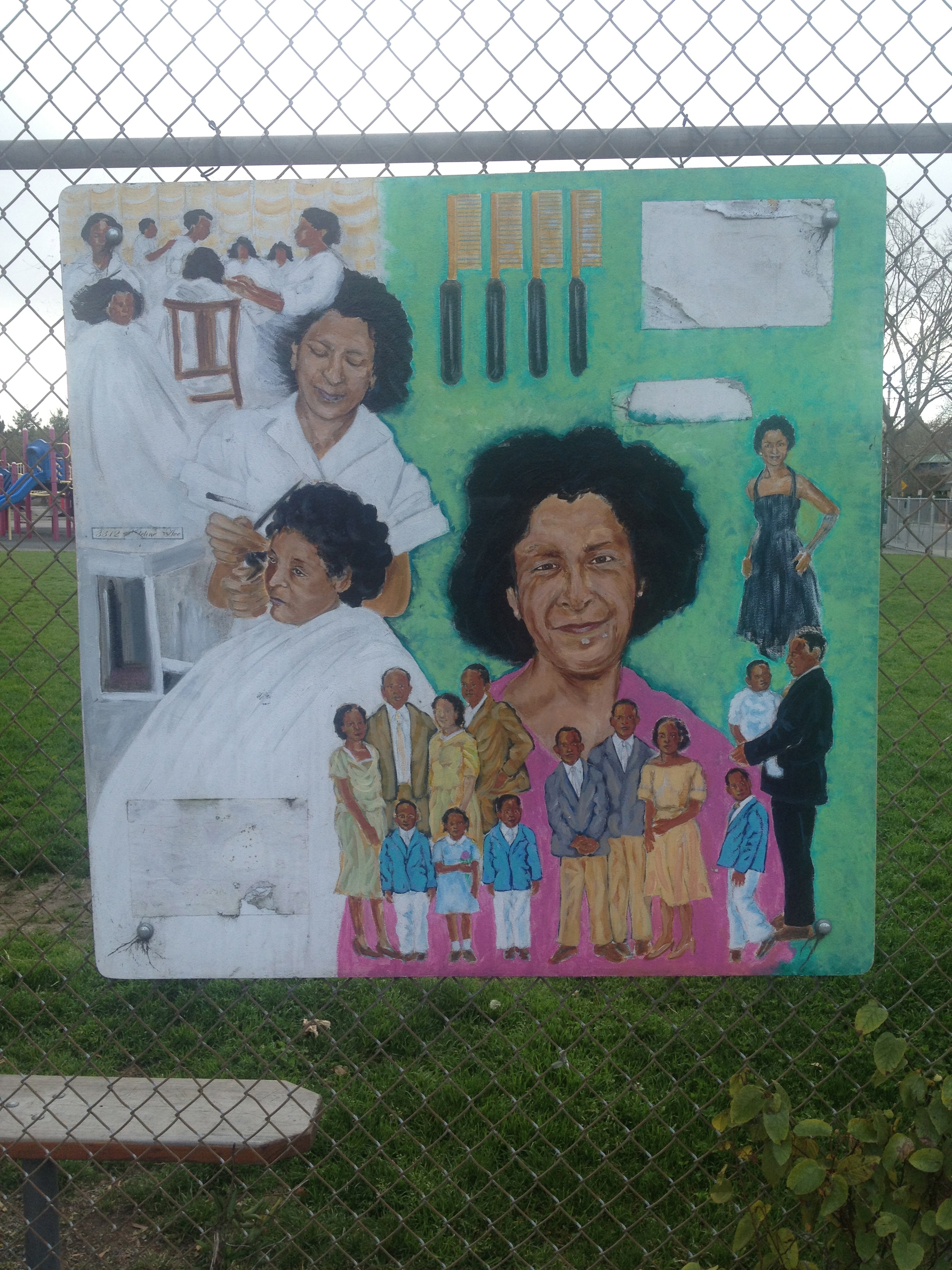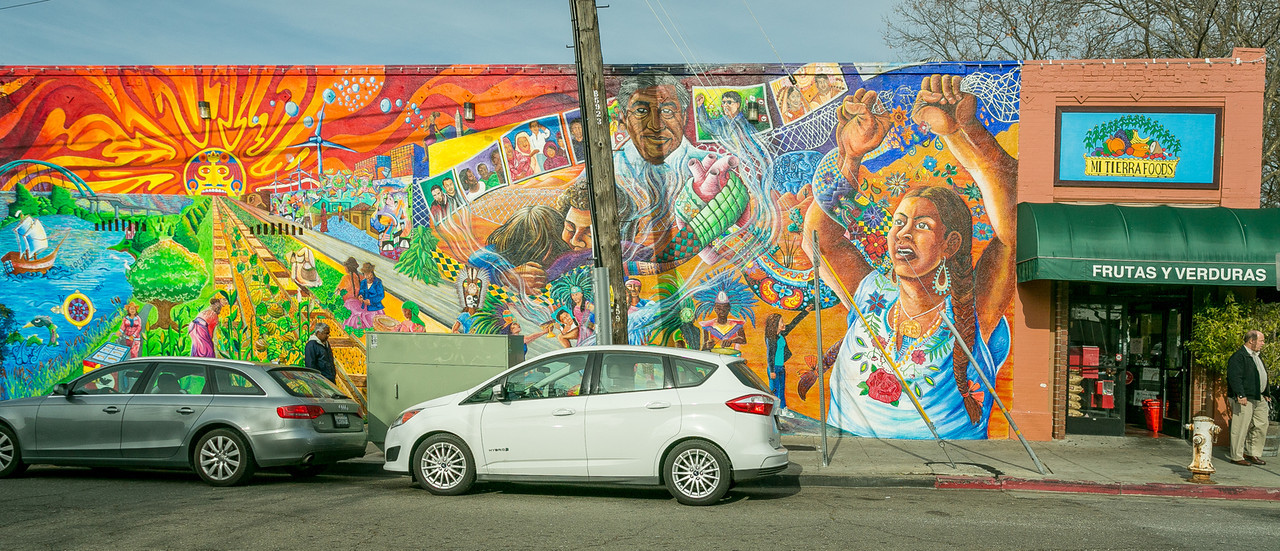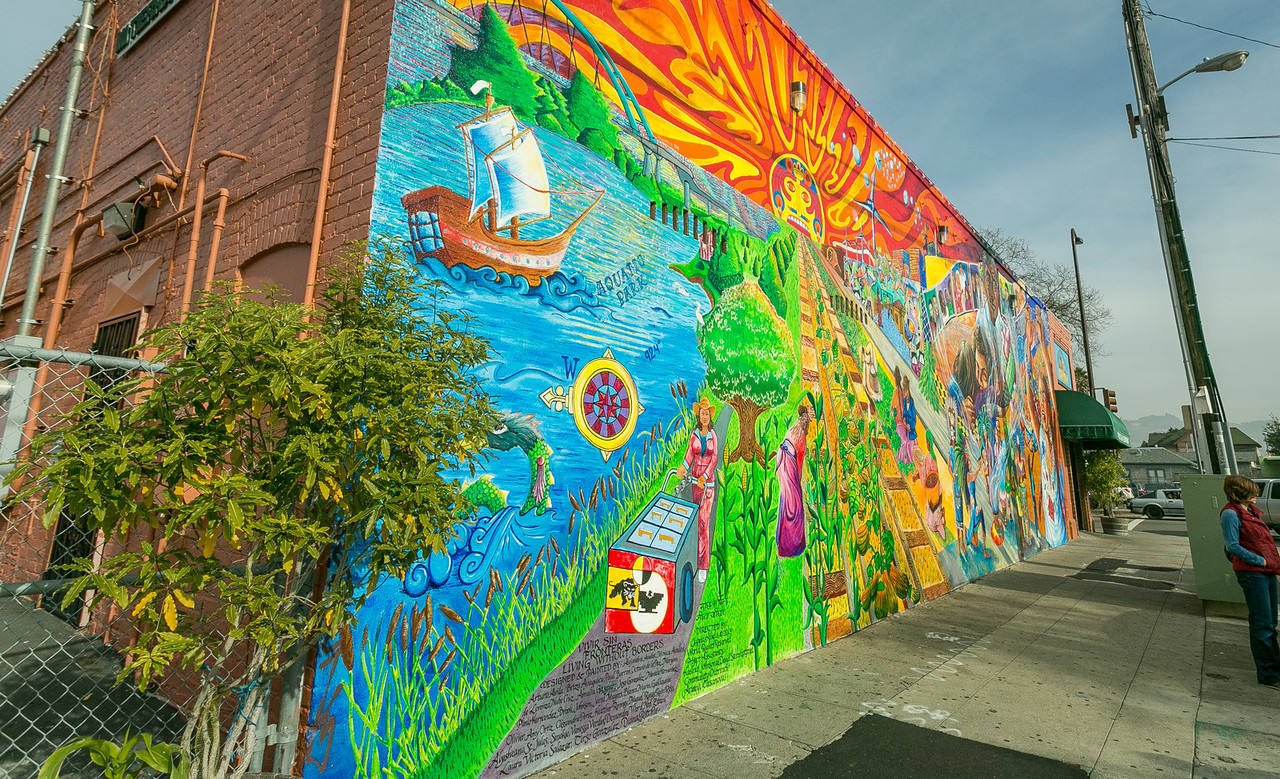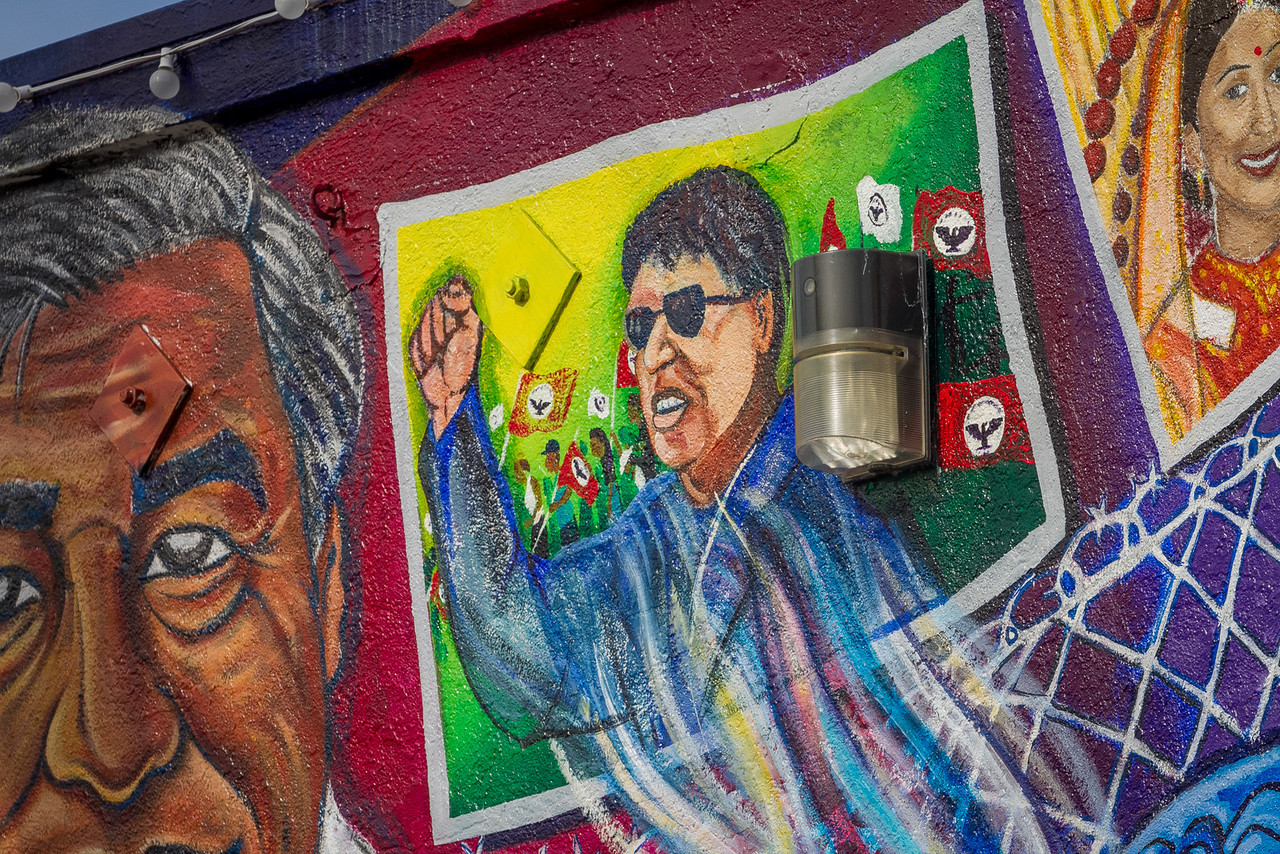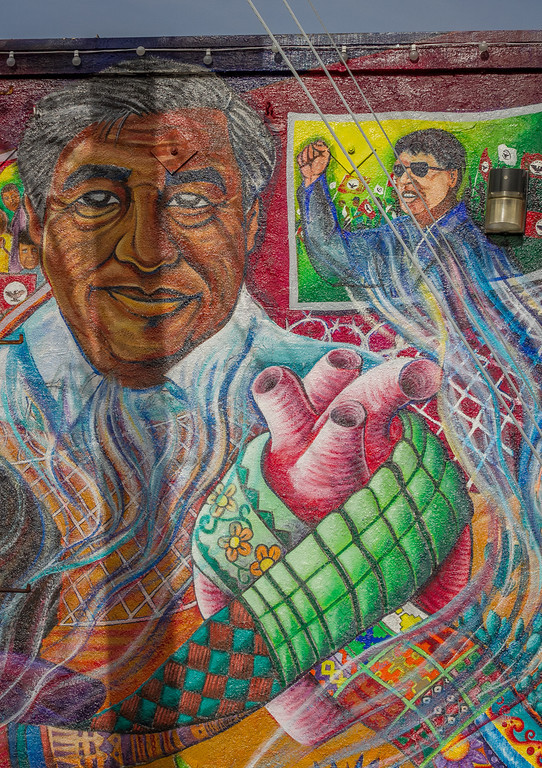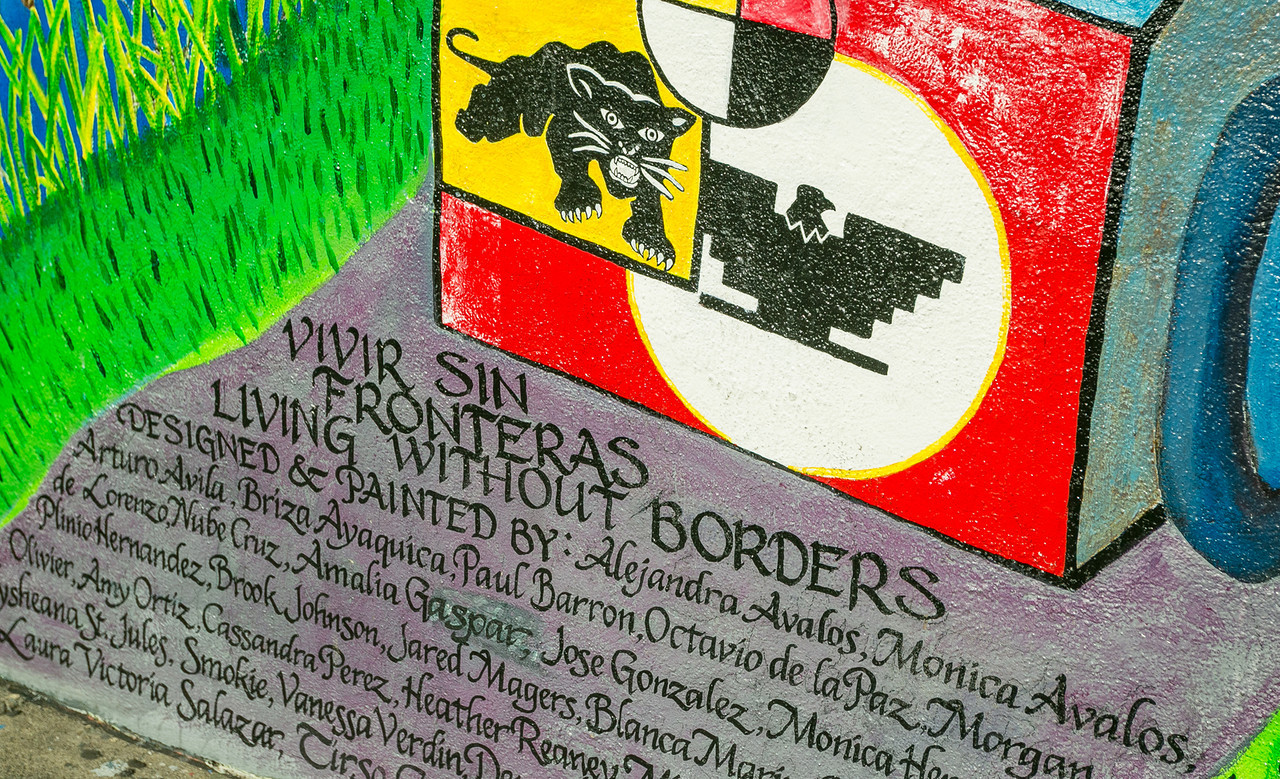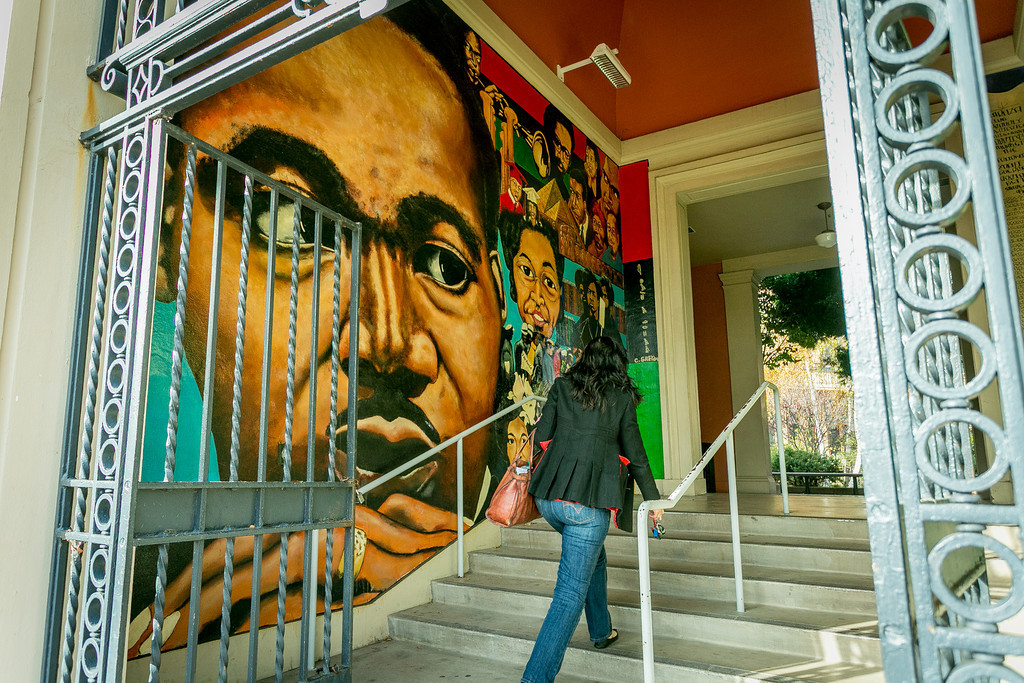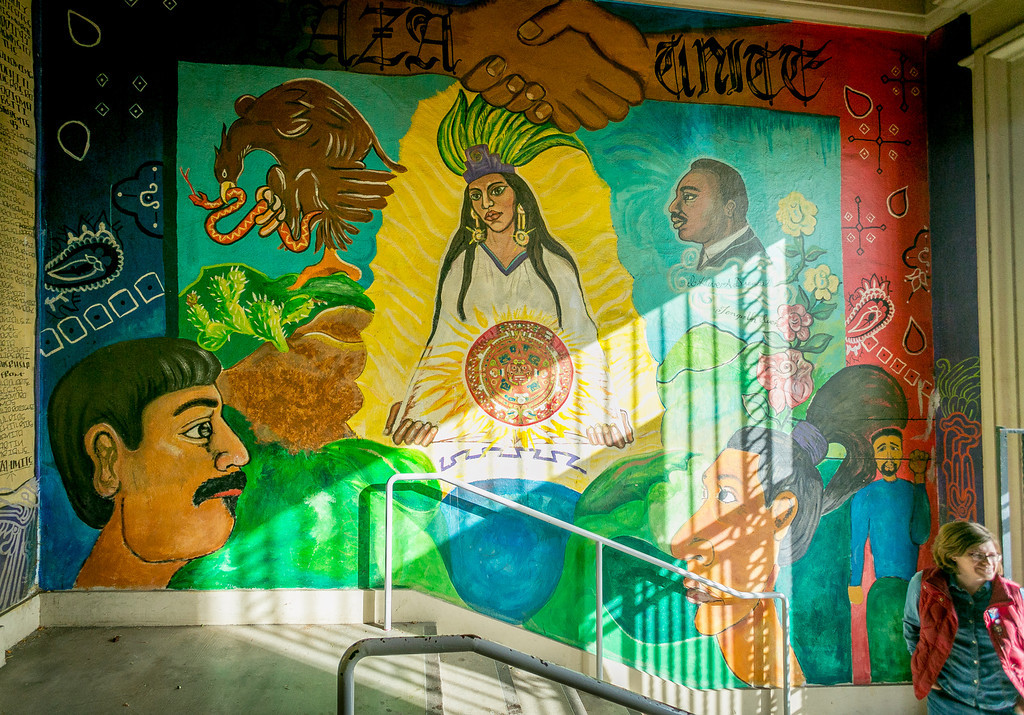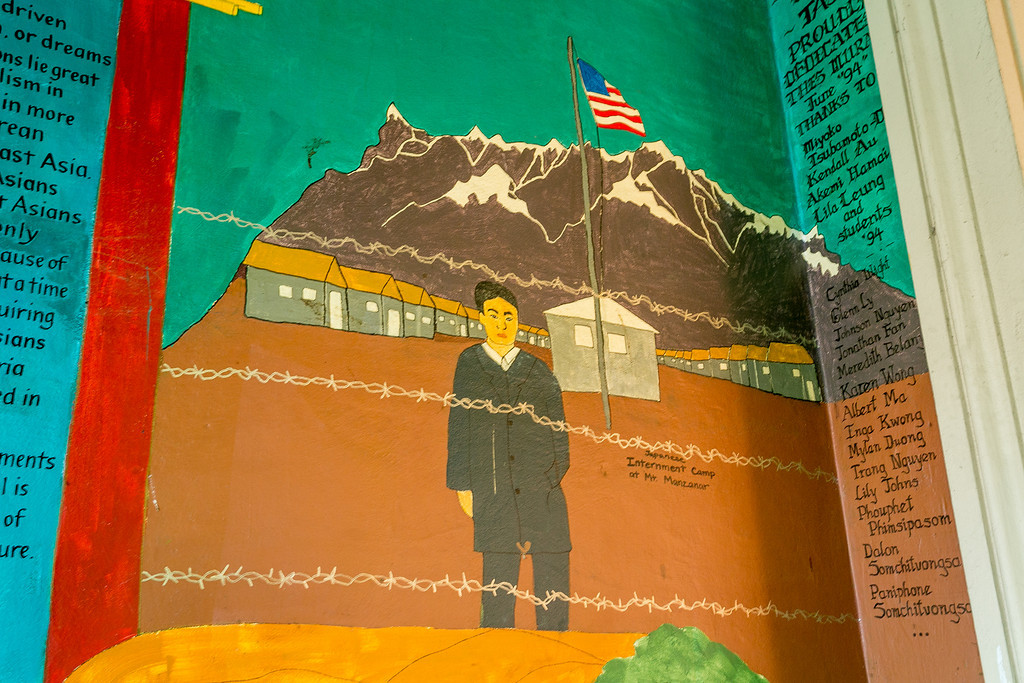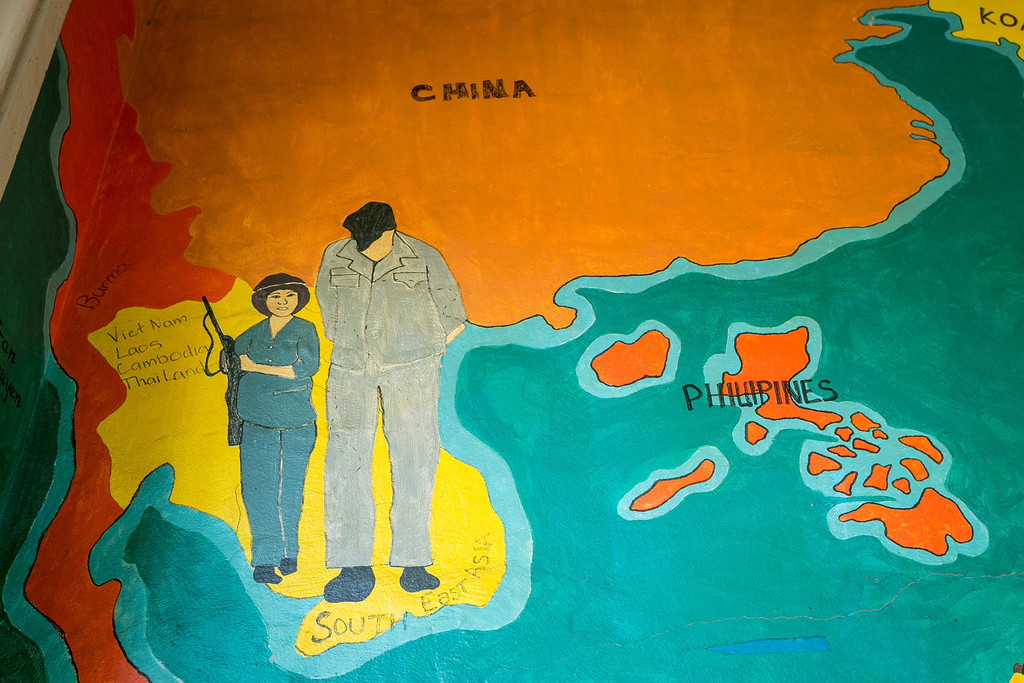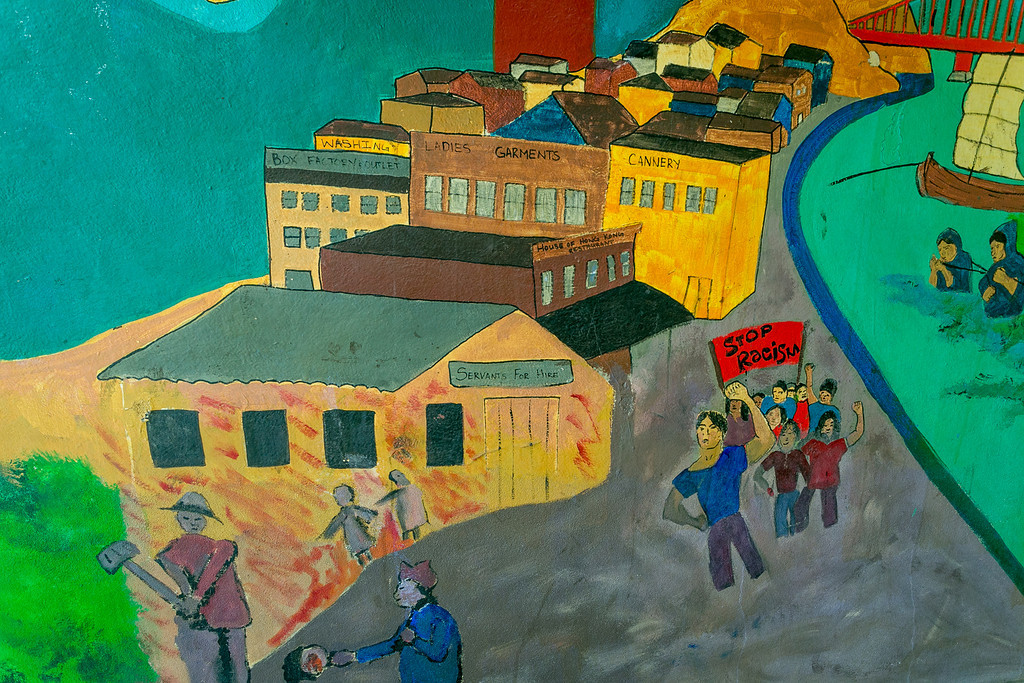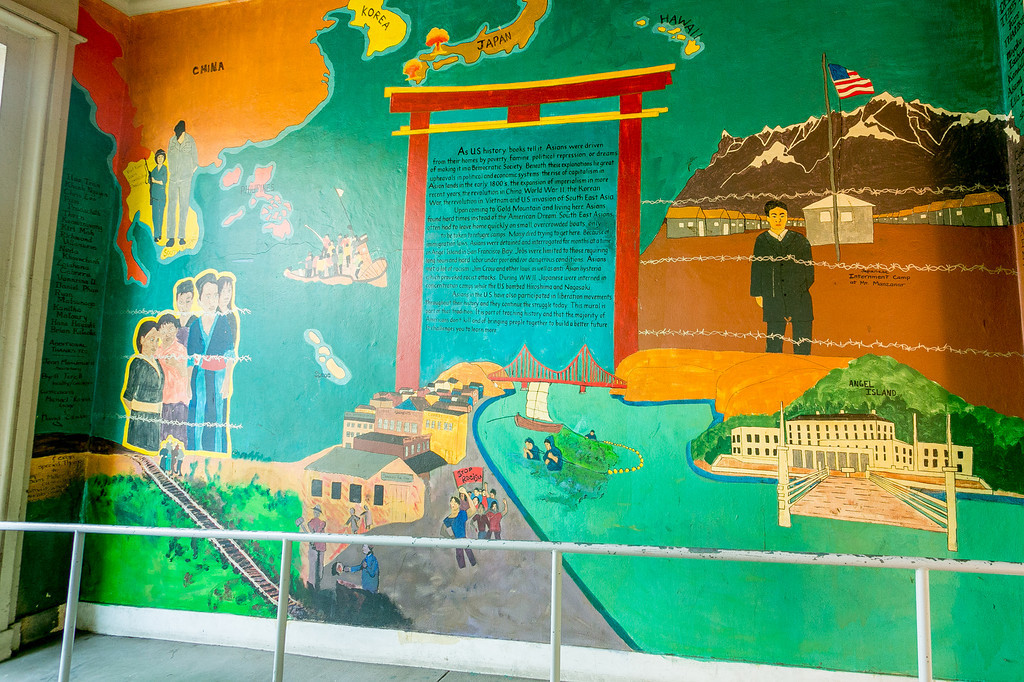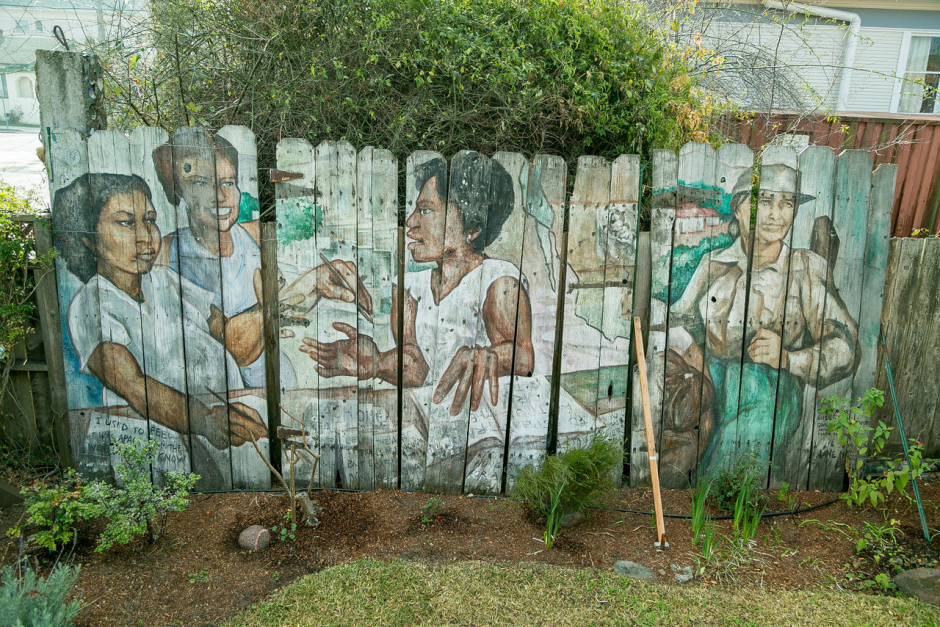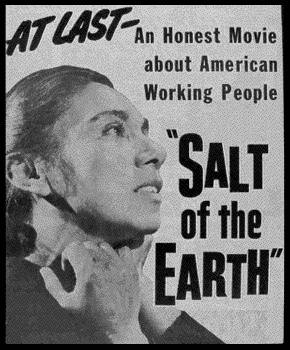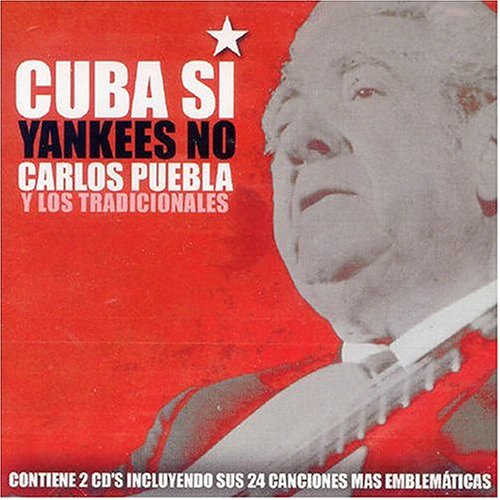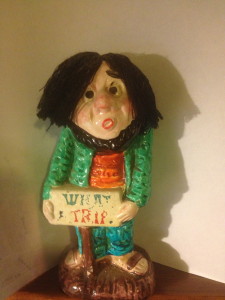There are dozens of murals in Berkeley. Some are more commissioned-looking than others, some are naive, some are polished and refined. Some are quirky in and of themselves, while all of them add to the overall quirky state of Berkeley.
I am starting here with murals that celebrate struggle. “Struggle” is a loaded word. The OED defines sense 1 as “An act of struggling; a resolute contest, whether physical or otherwise; a continued effort to resist force or free oneself from constraint; a strong effort under difficulties.” But when I say “struggle” I mean a little bit more than that. I mean good guys vs. bad guys, and we are the good guys – the strife of truth with falsehood.
Murals can serve as powerful reflections of struggle. If you doubt the political power of a mural, think only of the labor mural that newly elected rightist Governor LePage of Maine had removed upon taken office. It offended him politically because it “bowed to organized labor.” Really?
As far as I am concerned, the choice of musical background for any consideration of struggle is obvious:
Marchers sang this song on the United Farm Workers March on Gallo in Modesto on March 1, 1975.
I was there. Fred Ross Jr. conceived of and organized the march. It was a game-changer, the march was, in the efforts of the UFW to achieve good labor legislation in Sacramento. The song El Pueblo Unido was not in our repertoire. We were a singing union, just not this song. Bay Area marchers got it going. Great song!
Before I get to the Struggle Murals of today, let me start with these photos of a mural of the early 1970s from near People’s Park, perhaps the wall on Haste. The productions values of the photos aren’t great, but I find them breathtaking, perfect:
Until I was sent these three photos, I had not come across any photos of this first-generation mural on Haste. And then after many obsessive hours searching, I found a collection of stunning photos of People’s Park in 1969 by Janine Wiedel.
This one depicts the same wall shown above. And then, months later, I found this photograph and commentary on the self-defense mural in the Berkeley Barb of August 7 through 13, 1970.
The commentary from the Barb is not without humor, although the snark about the “flat-chested chick” is fairly appalling by today’s standards, and reflects the old-school attitude towards women and sex that had landed Max Scherr in hot water with his staff.
While this one appears to be not on Haste, but somewhere within or adjacent to People’s Park.
In the Berkeley Tribe of November 6-13, 1970, we find these murals from a Channing Way block party:
One final struggle mural of the past.
When the One World Family was running a vegetarian restaurant at Telegraph and Haste, the current home of Amoeba Records, their leader, Galactic Messenger Allen Michael, painted this mural on the side of the building. It bespeaks struggle, but it also bespeaks delusion – passing of the truth from outer space to Allen Michael.
For the murals of today, what better place to start than People’s Park, the mixed-blessing icon of struggle in Berkeley. The murals that adorn the public restroom on Haste celebrate the birthing struggle of 45 years ago:
The mural includes the lyrics to Leon Rosselson’s 1975 song “The World Turned Upside Down,” Of the song he says: I wrote the song in 1974. It’s the story of the Digger Commune of 1649 and their vision of the earth as ‘a common treasury’. It’s become a kind of anthem for various radical groups, particularly since Billy Bragg recorded it [1985], and is not adapted from any other song. The title is taken from Christopher Hill’s book about the English revolution.” The best-known version of the song was by Billy Bragg.
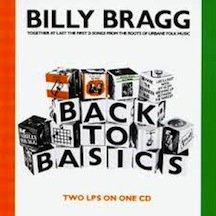 Half a block west is the People’s History of Telegraph Avenue mural, designed by Osha Neumann, painted in 1976, restored and enlarged in 1999. The mural includes images from the Free Speech Movement, protests against the Vietnam War, the Black Panthers, and People’s Park.
Half a block west is the People’s History of Telegraph Avenue mural, designed by Osha Neumann, painted in 1976, restored and enlarged in 1999. The mural includes images from the Free Speech Movement, protests against the Vietnam War, the Black Panthers, and People’s Park.
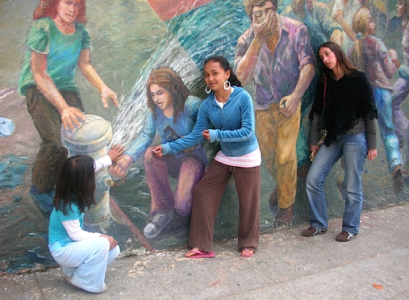 On the north side of Haste at Telegraph is the vacant lot that was once the Berkeley Inn. A mural facing the People’s History of Telegraph Avenue also highlights struggle:
On the north side of Haste at Telegraph is the vacant lot that was once the Berkeley Inn. A mural facing the People’s History of Telegraph Avenue also highlights struggle:
The mural was painted in 1996.
It is painted on plywood and so can be moved and reinstalled when the site is developed. If the site is developed. Which I think it will be.
Which it has been. In February 2014 it was dismantled, section by section. Ted Friedman took this photo of the dismantling process:
Inkworks Press at 2827 7th Street is a collective that came into being in 1974. That is a long time for a collective. They give us a struggle mural to die for:
Their mural was painted by Juana Alicia. It is, they tell us, “a vivid and colorful representation of the past 40 years of people’s history and grassroots movements.”
Almost as powerful – and, yes, I know that that is very subjective – is the mural at La Pena Cultural Center at 3105 Shattuck.
La Peña Cultural Center was started in response to the military coup that overthrew the socialist government of Salvador Allende on Sept. 11, 1973. La Peña incorporated on September 11, 1974, one year after the military coup and opened its doors in June of 1975.
Next to La Pena is the Starry Plough at 3101 Shattuck. There is significance in the name and sign:
The Starry Plough banner was first used by the socialist, Republican Irish Citizen Army during the 1916 Easter Rising. Which brings us to revolutionary Irish songs, kind of the point of the Starry Plough Pub.
“Four Green Fields” and “Patriot Game” are right up there with “El Pueblo Unido” when it comes to songs of struggle that inspire. Seriously. The murals at Starry Plough:
As you can see, they celebrate the song of struggle rather than the struggle, which is not to say that the song is not struggle because it is.
Before the big numbers to finish the show, let’s visit two low-profile, homegrown efforts. First, Images and Words of Hope:
This is from the Young Adult Project at 1730 Oregon Street. And then along the fence around Malcolm X School are these small murals honoring those who struggled:
They inspire. And then there are two large, bright efforts. First, at the Mi Tierra grocery store at 3045 San Pablo:
At the bottom of the mural are the iconic symbols of the United Farm Workers and the Black Panthers. This makes two Berkeley murals with the panther. You will have to look elsewhere for a better body of Panther murals.
The mural is named Living Without Borders/Vivir Sin Fronteras. It, like the Inkworks mural, is the creation of Juana Alicia. You can read about it here.
We will almost finish at Martin Luther King Middle School. Murals at the Rose Street and Grant Street stairways remind us of great leaders and great struggles:
Here is my story about struggle and King Middle School. When my middle daughter Rosalie was in sixth grade, I visited her class and talked about what it was like to work for Cesar Chavez. I had fun. When she got home from school I asked her what her friends had to say about my talk. “They wanted to know how come my dad sweats so much.” Okay, fair enough. That’s what you get for wearing a light blue dress shirt.
I have saved my favorite struggle mural for last.
You have to stand on your toes and look over the gate towards the south. Jane Norling painted this mural in 1984 in San Francisco. It honors the literacy movement undertaken by the Sandinista government in Nicaragua and condemns US imperialism in Central America. For more about Jane Norling and this mural, visit here. For her website, visit here. For more about revolutionary literacy movements, visit here.
My friend remembers the light blue dress shirt incident with Rosalie’s class. He mocks me for wearing dress shirts. Although he is not the most political person in the world, he “digs” (his word) struggle. He was with me for much of my time with the farm workers.
Salt of the Earth is one of his favorite movies. He suggests that we watch it tonight, which is fine by me. He suggests a different song for the page theme song, from this album:
We learned many of these songs from Peter Baird in 1974 in Salinas, but I think that they are too esoteric. What does he think of these murals?


